Matador Network's Blog, page 49
May 1, 2025
California’s 5 Must-Visit Wine Regions, From North to South
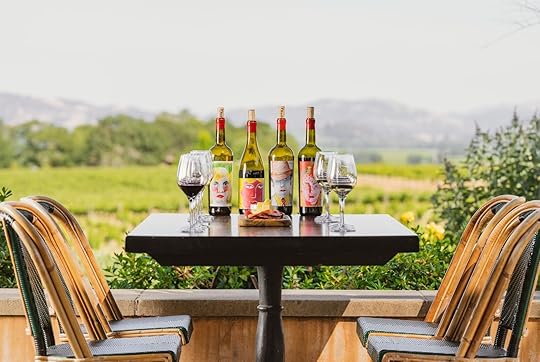
More than 80 percent of all the wine made in the United States comes from California. The state alone is the fourth-largest wine producer in the world after Italy, France, and Spain. And while the vineyards and wineries in the northern half of the state are the most famous, producers in Napa and the surrounding areas only make a fraction of the high-quality wines found up and down the California coast.
I grew up in a little wine town on the Central Coast. It was easy to take what was in my own backyard for granted, even as I got older and started to appreciate my hometown wineries. It wasn’t until I moved to New York City and started working in wine — first at a boutique wine store in the Upper West Side, then as a writer covering the wine industry and wine culture — that I fully realized how special California is to the wine world.
There are entire books devoted to exploring California wine. Some cover the state’s 154 American Viticultural Areas (or AVAs, the designated wine-producing regions listed on labels), other tome-length volumes focus just on one section of the state. It can be a lot to take in for anyone — even for those well-versed in wine. One of my favorite ways to approach learning about California wine is to start north and head south. The vibe tends to get more relaxed the farther south you go, though the wine is still seriously good.
Wine enthusiasts could spend years just exploring any one of the regions below (not to mention the many in between, even if only hitting the most sustainability-minded regions). But for the highlights and an introductory taste, these are the five parts of California that every wine lover should experience at least once.
Napa | Sonoma | Santa Barbara County | Paso Robles and San Luis Obispo County | Temecula ValleyWe hope you love the Airbnbs we recommend! Just so you know, Matador may collect a small commission from the links on this page if you decide to book a stay. Listed prices are accurate as of the time of publication.
Napa
Photo: John Couture/Shutterstock
Napa is the premier name-brand wine region in the US. Wines with “Napa” on the bottle carry a well-earned reputation for quality around the world, and people travel near and far to see the vineyards and wineries. There’s certainly plenty to choose from: Napa Valley has nearly 500 tasting rooms, and 3.7 million people visited the area in 2023, according to the latest numbers from Visit Napa Valley. While that means there’s no shortage of options, it also means picking where to go can be a bit overwhelming. Regardless of your choice, however, you’re unlikely to be disappointed (particularly if you do your wine tasting on the Napa Wine Train).
The broader Napa Valley AVA contains 16 smaller AVAs. Each has a distinct terroir, from the valley floor and the historic St. Helena AVA, to the higher-altitude vineyards near the Mayacamas Mountains. Many of Napa’s most iconic wineries built their name on cabernet sauvignon and chardonnay. That said, more than 35 grape varieties are grown here, so you’re sure to find something you like. Napa’s classic wineries — Chateau Montelena, Stag’s Leap, and Grgich Hills Estate, to name a few — are destinations in their own right, or you might opt for one of the wineries helping the region lead in river restoration and sustainability. Though you don’t have to travel far to drink great wine from across the valley. Downtown Napa is filled with tasting rooms so you can get a taste of the area before planning which vineyards to visit.
Wineries to visit:
William Cole Vineyards: Private, 90-minute tastings by appointment for $150 per person that start with a tour of the historic stone winery building built in 1873 and ends with a seated tasting. Charcuterie pairing available for a fee by request.Far Niente: A sustainability leader for decades in a stunning location with a 19th-century stone winery. Private tastings with a cheese and charcuterie plate start at $120, while tastings with tours of the wine cave and pours from the brand’s rare wine collection cost $275.Cakebread Cellars: One of the best places in Napa for merlot, Cakebread has a range of tours and seated tastings by appointment.Where to stay Photo: Airbnb
Photo: Airbnb Photo: Airbnb
Photo: Airbnb Photo: Airbnb
Photo: Airbnb Photo: AirbnbSee more photos
Photo: AirbnbSee more photosWhen exploring some of California’s most storied winemaking estates, you’ll want to be as close as possible, not only for the sake of convenience but because waking up to vineyard views is part of the experience. For a group stay (up to seven guests), this Guest Favorite Airbnb is minutes from wineries, the Napa River, and downtown Napa. The home overlooks the valley with al fresco dining spaces on two decks and a gourmet kitchen. Another group-sized option is this three-bedroom bed and breakfast ($1,430 per night) on the Yount Ridge Estate. The property sits on 15 acres with some of the most stunning views of Napa Valley. There are also morecompact and affordable Airbnbs. Take, for example, this one-bedroom cottage ($124 per night) on a river-side resort two minutes from the Oxbow District. Guests can access on-site amenities such as indoor/outdoor games, a heated swimming pool, and a hot tub.
The best Airbnbs in Napa for groupsSonoma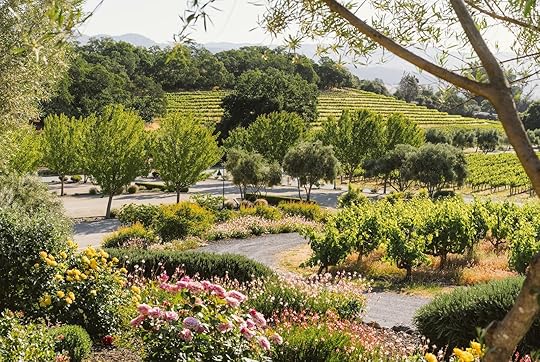
Photo: Francis Ford Coppola Winery
Sonoma is next door to storied Napa. Wines from this region are just as well-crafted, and the terroir just as vineyard-friendly, as those of its more famous neighbor. The prices, glamour, and vibe, however, are much different. Sonoma County’s 19 AVAs stretch from the Pacific to the mountains, and are known for being laid-back and sustainability-first. The county covers a wide geographic range, so it’s best explored by picking one or two areas to focus on each trip. Healdsburg is a natural starting point. This small town is a hub for great wine, Michelin-star dining, and outdoor recreation. Or base your trip in Sebastopol, one of Matador Network’s favorite small towns in the US.
Roughly 60 varieties of grapes grow in Sonoma County. Chardonnay, pinot noir, and cabernet sauvignon are the most widely planted, followed by zinfandel, merlot, sauvignon blanc, and syrah. One of the most popular wine regions in the area is the Russian River AVA, where you’ll primarily find wines made with cool-climate grapes like chardonnay and pinot noir at the more than 80 wineries. It’s also an easy region to reach from the Bay Area.
Wineries to visit:
Francis Ford Coppola Winery:Here, guests can get a taste of the winemaking process first-hand along with a taste of the wines themselves. The free Coppola WineLab offers the opportunity to experience how different winemaking techniques influence flavor and provide feedback that’s considered in the final blends. More traditional tastings are also available, or just sip on wine and enjoy what else is on the property: a restaurant, pool with cabins, live entertainment, and a collection of movie memorabilia from Francis Ford Coppola’s oeuvre.J Vineyards: Located in Healdsburg, this winery is known for its acclaimed sparkling and still wines, and offers elevated tasting experiences. Don’t miss the Bubble Room tasting for $175 featuring pairings with a five-course menu.Enriquez Estate Wines: This Sonoma winery doesn’t have an official tasting room for its by-appointment visits. What it does have is an intimate tasting of tempranillo, pinot noir, cabernet franc, and more on the family-owned estate surrounded by vines and a rustic barn.. You might even get insight from owner-winemaker Cecilia Enriquez. Or you can bring the tasting to you for a group of up to 20.Where to stay Photo: Airbnb
Photo: Airbnb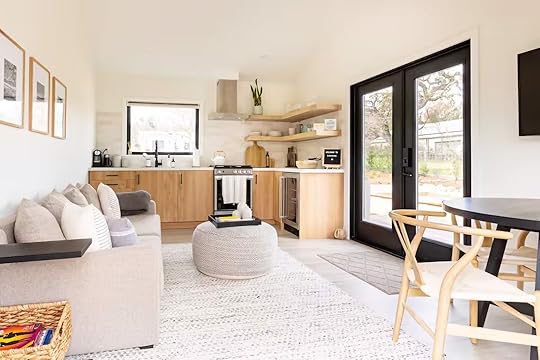 Photo: Airbnb
Photo: Airbnb Photo: Airbnb
Photo: Airbnb Photo: AirbnbSee more photos
Photo: AirbnbSee more photosChoose between staying in town within walking distance of restaurants, shops, and tasting rooms, or venturing to a more rural setting. You’re spoilt for choice in either setting. This Scandinavian-style farmhouse offers a rural stay 10 minutes from Sonoma Square. The family-friendly home is beside a working biodynamic vineyard, and there are dozens of world-class wineries within 15 minutes of the charming Airbnb. Another option within a quick drive to town is this three-bedroom tranquil retreat ($630 per night.) The open and spacious interior is flooded with natural light, and there are outdoor decks for evening entertaining. For a stylish group stay, this creekside three-bedroom ($534 per night) on the east side of Sonoma is one to bookmark. There’s ample outdoor space, a wraparound deck, a hot tub, and al fresco dining underneath a canopy of olive and citrus trees.
Santa Barbara County
Photo: Carolin Sunshine/Shutterstock
Bordering the Pacific on the Central Coast, Santa Barbara County has more than 300 wineries across seven AVAs. Cool-climate varieties like chardonnay and pinot noir are the most widely planted grapes, followed by syrah, sauvignon blanc, cabernet sauvignon, and grenache. More than 75 grape varieties thrive here thanks to a wide range of microclimates.
Start in the sleepy town of Lompoc, where you can taste some of the best pinot noir in the country made with grapes from the Sta. Rita Hills AVA. The east-west mountains help bring in cool ocean air and morning fog, and many local winemakers have set up tasting rooms in an old warehouse district now called the Lompoc Wine Ghetto. While the wine compares to the quality of California’s more famous northern regions, the prices are much lower and the environment much more casual whether you go to the in-town tasting rooms or the vineyards themselves. If price is less of a consideration and you want something a little fancier, Santa Barbara, the “American Riviera,” has its Urban Wine Trail.
From there, head farther inland to the Santa Ynez Valley. Sideways helped make this wine region famous with filming locations in Buellton and across the valley. Here, the roads are lined with vineyards and dotted with small towns. The warmer climate here is well suited for syrah, grenache, mourvedre, roussanne, and viognier. Los Alamos looks straight out of an old Western movie, and Los Olivos seems to have as many tasting rooms as every other business combined in the small downtown area: about 30 in a town of less than 1,000 people.
Wineries to visit:
Montemar: A playful winery in the Lompoc Wine Ghetto making seriously good pinot noir and syrah. Come for the wine tastings that range from $15 to $25, and stay for a glass in the large outdoor patio space and garden before walking to the other nearby tasting rooms.Alma Rosa: Make an appointment to sip pinot noir in the Sta. Rita Hills with a cheese pairing for $75. Or go deeper and take a tour of the vineyards in a large golf cart followed by a reserve wine tasting for $100. For outdoorsy types, there are two hike-and-taste options as well.Fess Parker: A focal point of the Foxen Canyon Wine Trail, Fess Parker is a family-owned winery founded in 1989. The gorgeous estate has seated tastings, kid- and dog-friendly patio tastings, reserve tastings, and a vineyard tour tasting.Where to stay Photo: Airbnb
Photo: Airbnb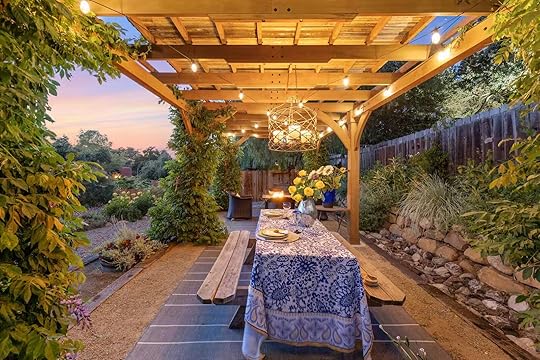 Photo: Airbnb
Photo: Airbnb Photo: Airbnb
Photo: Airbnb Photo: AirbnbSee more photos
Photo: AirbnbSee more photosTo truly immerse yourself in the sun-drenched hillsides and vineyards of the county, consider staying in Los Olivos or the Santa Ynez Valley. Ideal for a small family or group of friends, this two-bedroom home in the heart of Los Olivos is within walking distance to the many tasting rooms downtown. Owned by a writer and artist, expect creative design details throughout the interior and garden spaces. The front yard is a butterfly sanctuary, and there’s a wisteria-draped gazebo where you can watch the sunset over the nearby hills. For a group stay in Santa Ynez, you won’t find better than this four-bedroom countryside retreat ($938 per night.) A top Airbnb, the home sits among rolling hills and vineyards on a private seven-acre estate. It ticks all the boxes: breathtaking views, secluded outdoor space, outdoor dining, and the perfect blend of rustic-chic styling and modern amenities.
Paso Robles and San Luis Obispo County
Photo: randy andy/Shutterstock
Paso Robles is within San Luis Obispo County (known locally as simply “Paso” and “SLO”). The town of Paso Robles is about 25 miles from the coast at the halfway point between Los Angeles and San Francisco. Unlike most of the wine regions in nearby Santa Barbara County, however, Paso Robles (the city and the AVA, which share the name) tends to see notably higher temperatures. The most popular varieties are classic grapes from France’s Bordeaux and Rhône regions: cabernet sauvignon, merlot, zinfandel, syrah, and chardonnay. Smaller amounts of viognier, pinot noir, and other varieties are also grown in the region’s cooler microclimates. Eleven sub-AVAs within the Paso Robles AVA offer plenty of opportunities to taste a wide range of styles across the 200 or so wineries here. The Adelaida District and Willow Creek District AVAs are particularly noteworthy. At the southernmost edge of the Paso Robles region is the Santa Margarita AVA. It’s home to just one vineyard, Margarita Vineyard, the estate vineyard of Ancient Peaks Winery, where you can zipline or take a wildlife tour alongside a tasting of award-winning wines.
To get a taste of the whole county, follow the SLO CAL Sustainable Wine Trail. More than 50 of the region’s 250-plus wineries along the 70-mile stretch of Highway 101 are certified for sustainable viticulture. Edna Valley, just outside of the lively college town of San Luis Obispo, has had grapevines on the land since the Spanish missionaries planted them in the 1800s. Here, you’ll find cooler weather ideal for pinot noir, chardonnay, viognier, and syrah, as well as many sustainability-minded operations.
Wineries to visit:
Halter Ranch: This Paso Robles estate is the world’s only fly-in winery and vineyard — and has on-site accommodations and fine dining, too. You don’t have to know a pilot to enjoy the property. Tastings can include a tour of the largest wine caves on the Central Coast or a tour of the 2,700-acre estate in a Land Rover.L’Aventure: French winemaker-owner Stephan Asseo spent decades making wine in premier wine regions in France before heading to Paso for more freedom and a distinct terroir. Open since 1998, L’Aventure focuses on blends that highlight the region. Tastings among the vines at this highly lauded winery start at $50, while a private one-on-one tasting in the wine caves start at $130.Chamisal: The second SIP certified winery (a stringent sustainability certification), the Edna Valley winery Chamisal is about 10 minutes from downtown SLO. You’d never guess from the vineyard-surrounded tasting room where you can sip flights or indulge in a bubbles and caviar pairing.Where to stay Photo: Airbnb
Photo: Airbnb Photo: Airbnb
Photo: Airbnb Photo: Airbnb
Photo: Airbnb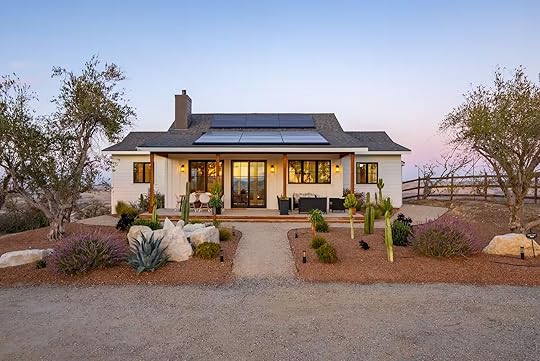 Photo: AirbnbSee more photos
Photo: AirbnbSee more photosYou’ll want to stay close to Paso Robles and Edna Valley wine trails. This two-bedroom cottage is geared to those who value waking up to 360-degree views of Paso Robles wine country. After a day of tastings, you can kick back on the back patio around the fire pit or take in the sunset from the hot tub hidden in the hillside. For a more intimate stay, this one-bedroom barn conversion ($180 per night) is simply beautiful. A top five-percent listing, the home was once used as a floral design studio, so expect light-drenched rooms and a stylish natural color palette.
Temecula
Photo: Brian Reilly/Shutterstock
Temecula Valley is unlike the storied wine regions in Northern California and along the Central Coast. It’s relatively newer — the first vineyards were planted in the 1960s — and in close proximity to the desert. This Southern California wine region is hot and dry. The 33,000-acre Temecula Valley AVA, located between Los Angeles and San Diego, is home to about 50 wineries. Warm-loving varieties like syrah, grenache, and Italian varieties take center stage. Continuing the trend of wine regions becoming more casual and affordable the farther south you go from Napa, Temecula Valley wineries are often just as much about the visitor experience as the wine itself. Big groups and wedding parties are more than welcome at many of the wineries, and it’s not uncommon for the wineries here to have on-site dining, accommodations, and live entertainment. They can also be quirky: Briar Rose Winery has a replica of Snow White’s cottage on the property, while Europa Village is a multi-winery resort designed to evoke small towns in France, Italy, and Spain.
The AVA has a relatively small number of wineries for how large it is. Three designated wine trails make it easier to navigate: the Rancho California Wine Trail covers some of the older and best-known wineries, the Calle Contento Wine Trail takes you off the more well-traveled roads, and the DePortola Wine Trail includes 11 family-owned wineries all in close proximity.
Wineries to visit:
Bottaia: Wine club members get special terrace views over the vineyards and access to the pool and lounge, though non-members can still enjoy a seated tasting paired with a charcuterie board or head to the wine blending lab to bring home their own mix.Leoness: The highly-rated wines at Leoness get new meaning through a tasting and tour of the estate. The winery focuses on farming first, and seasonal tours walk through the vines, barrel room, and winemaking facilities before a flight paired with cheese.South Coast Winery: The award-winning wine is a major draw here, but that’s matched by the experience overall. South Coast Winery is the only full-service winery resort and spa in Temecula Valley, with accommodations set among the vineyards. Visit for a tasting experience, live entertainment, and guided tours that can include walking the grounds or blending your own wine.Where to stay Photo: Airbnb
Photo: Airbnb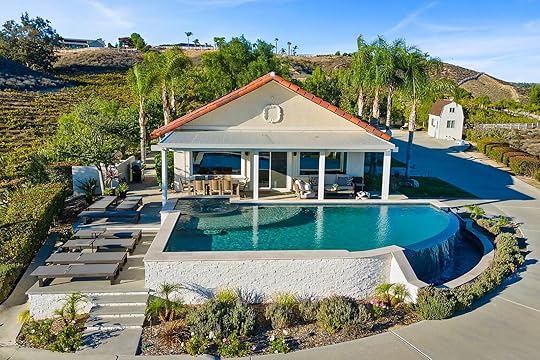 Photo: Airbnb
Photo: Airbnb Photo: Airbnb
Photo: Airbnb Photo: AirbnbSee more photos
Photo: AirbnbSee more photosSure, you can travel easily from Los Angeles and San Diego to Temecula for a day in wine country, but to avoid pulling straws for a designated driver, there are Airbnbs close to the city and tasting rooms. For views and only a two-minute drive to wineries, check out this three-bedroom single-story villa with a pool and spa. If you’d rather stay somewhere a smidge more rural, this three-bedroom home ($619 per night) is on a small family vineyard. The backyard is surrounded by vines, and there’s a large patio area, a gas fire pit, a grill, and a hot tub.
More like thisWineThe Ultimate American Wine Road Trip, MappedThe Price of Paradise: Luxury Travel Can Save the World’s Wildest Places, but at What Cost?

In summer of 2022, an American tourist threw a rented scooter down the famous Spanish Steps in Rome; it caused $26,000 worth of damage to the 300-year-old stone staircase. The tropical island of Boracay in the Philippines had to close for six months to recover from damage done by tourists to beaches and wetlands. And on the Indonesian island of Bali, more than 60 percent of aquifers are running dry as hotels and resorts demand more water for guests.
These incidents are not isolated and illustrate the mounting pressures that global tourism exerts on fragile environments and landmarks. Overtourism is hardly a new concern when it comes to travel woes — but it’s not unavoidable. A number of places around the world are turning to exclusivity over wide accessibility to limit tourism impact.
Just ask Charlotte Barbosa, course director for dive shop Divers Den, based in Cairns, Australia. “Unlike in other regions, only one dive boat per site is allowed on the Great Barrier Reef,” she says. According to recent research, about 86 percent of all visits to the Great Barrier Reef Marine Park, managed by the Great Barrier Reef Marine Park Association, are concentrated across just seven percent of the marine area.
The rest of the reef is difficult to reach for both guests and commercial dive operators. Operators must get permits specifying when and where they can access sites, with hefty fines or permit revocation for violations. Environmental Management Charges are collected from each passenger to fund protection programs, and the various marine park zones are regularly patrolled in partnership with Queensland Parks and Wildlife Service. Tour operators must submit environmental and activity reports. Some shops, like Divers Den, go further by meeting global Green Fins standards and participating in long-term monitoring efforts like the Eye on the Reef citizen science program.

A Divers Den boat on a dive site on the Great Barrier Reef. Photo: Divers Den
The result of all this, Barbosa says, is a reef largely unaffected by the direct impacts of overtourism. Like all reefs, the Great Barrier’s coral gardens are threatened by humans in the form of ocean warming and coral bleaching from climate change. But the direct impact from tourists, she says, is very low. In fact, she thinks the overall effects of tourism here is a beneficial one.
“Visitor education and reef levies [taxes] provide essential funding and awareness for the reef,” Barbosa says. “That far outweighs tourism’s environmental impact.” The reef attracts more than 2 million visitors annually. Those tourists contribute $5.7 billion to the Australian economy — 90 percent of the $6.4 billion economic impact of the reef. (Other economic contributions come from fishing, recreation, and scientific research).
Maintaining healthy reefs comes with a cost — one borne primarily by the wealthy tourists who can afford to go diving on the Great Barrier Reef. Divers Den charges about $220 USD for a two-dive day trip, including lunch, compared to average rates of $120 to $160 in other parts of the world. That’s pricier than diving in the Red Sea, the Maldives, Indonesia, Fiji, French Polynesia, or almost anywhere else on Earth, other than Galápagos and Iceland — two notoriously expensive vacation destinations. While that helps keep most of the Great Barrier Reef relatively healthy despite heavy tourism, it’s only relatively wealthy travelers who will get to experience it.
The argument over environmental gatekeepingGatekeeping to decrease the number of tourists is primarily done in one of two ways: limiting public knowledge of a place or how to get there, or by implementing high prices that intentionally limit access. While some see gatekeeping as necessary for conservation, others criticize it for fostering exclusion and elitism, arguing it limits access to experiences everyone has an equal right to enjoy.
Yet for some destinations, the answer to whether or not to gatekeep comes down to basic facts: the planet can only handle so much tourism.

Photo: Pikaia Lodge/Shutterstock
“We fully recognize the tension there is between exclusivity and accessibility,” says Norman Brandt, manager of the high-end Pikaia Lodge on Santa Cruz Island in the Galápagos Islands. “But the Galapágos cannot sustain mass tourism, and that is why the national park limits the annual number of visitors. The sole idea of scaling access to everyone at any price would cause irreversible environmental damage.”
The Galápagos Islands are known for having one of the most fragile environments on earth, and reputable organizations such as UNESCO have called out spotty enforcement of environmental regulations. Ecuador limits the number of ship-based visitors to the islands each day, but has no cap on land-based visitors on areas outside the official park boundaries. As there are no hotels in the national park, all visitors spend a large part of their time in these less-protected areas.
In 2010, there were about 85,000 land-based visitors to the Galápagos. By 2023, about 230,600 people opted for land-based itineraries, staying in hotels or guesthouses on the four inhabited islands and taking day trips rather than joining the smaller number of travelers on live-aboard cruises.
In 2023, the International Galápagos Tour Operators Association called for limits on land-based tourism, but it’s still unregulated outside of the park as of April 2025. The government has taken steps to control tourism, such as doubling the national park entry fee to $200 per person in 2024. Though the land within Galápagos National Park has maximum quotas for each section of the park per day, evaluations of whether those numbers are environmentally sustainable, appropriate, and effectively monitored are mixed at best. The growing tourist population is putting pressure on already limited supplies of freshwater and food, as well as taxing waste management systems and leading to habitat loss and pollution in the inhabited areas of the islands where regulations are less strict than in the national park. What happens in these more commercial areas has trickle-down effects on the entire 13-island region.

Tourists approaching wildlife on the beach in the Galápagos. Photo: Danita Delimont/Shutterstock
These reasons, and many more, are why lodges like Pikaia are choosing to implement their own visitation management strategies. Like many others, Pikaia’s strategy heavily relies on high pricing. Having fewer guests and more income means the lodge causes “less strain on local resources like water, energy, and waste systems, and has less impact on sites,” Brandt says. The resort also runs programs designed to improve the environment and local communities, like on-property reforestation to create homes for native animals and hiring a teacher for a local community school.
Even without these initiatives, costs would need to be high, Brandt adds, noting that the hotel’s location drives up even basic costs. “Operating in the Galápagos entails significant expenses related to environmental permits, outsourced guest services, specialized transportation, and complex logistics,” he says. Even a non-luxury hotel would still need to be expensive to meet a basic standard of environmental stewardship. Because of this, the lodge has no plans to switch to a more affordable model.
“We’re prioritizing quality over quantity,” Brandt says, noting that the resort caters to travelers who understand the “importance of conserving the Galápagos Islands” and are “ready to positively contribute to its long-term goals” — i.e., visitors who are willing and able to pay the high costs.

Like many others, Pikaia Lodge intentionally targets travelers willing to pay above average for a more sustainable and conservation-minded experience. Photo: Pikaia Lodge/Shutterstock
Though high prices can help protect the environment, they do little to address global inequality. As a 2019 report from Parks Journal notes, “Protected areas in low-income countries are on average 30 times less affordable to citizens than in high-income countries,” with high costs suppressing local visitation and weakening public support for conservation. Critics argue that pricing limitations mean only wealthy tourists, often from the global north, can access these areas, while local communities are priced out or only serve in secondary support roles. This echoes historical patterns of exploitation and turns nature into a commodity to be exploited, rather than valuing the natural environment for its own sake.
Tour operators like Divers Den recognize this tension. Barbosa notes that if prices rise too high, fewer people visit the reef, reducing the number of both tourism-related jobs and the tourist taxes that fund essential conservation work on the Great Barrier Reef. “Without tourism funding, conservation efforts and the Great Barrier Reef Authority wouldn’t exist, and crucial practices like water quality management and reef monitoring wouldn’t happen,” she says. While organizations like PADI AWARE also contribute, it works alongside, not apart from, government-run marine park management. In the end, raising prices might boost short-term profits and limit tourism-related damage, but it risks limiting public exposure to the reef.
“People protect what they love,” says Barbarosa. “Without exposure to the natural world, like seeing a panda in a zoo, people wouldn’t care to protect it.”

Expensive permit fees have helped fund efforts to save Rwanda’s mountain gorilla population. Their population has grown by hundreds since the park raised costs. Photo: Suzie Dundas
Love it or hate it, the model used on the Great Barrier Reef is effective — and not unique to Australia. After a civil war in the 1990s, Rwanda rebuilt its economy with a focus on sustainable development, purpose-built tourism, and economic development to benefit all. In Volcanoes National Park, home to critically endangered mountain gorillas, trekking permits started at $250 per person in 1999 and rose to $1,500 in 2017. Only 80 to 90 permits are issued each day.
The Virunga Massif gorilla population grew from 380 individuals in the mid-2000s to more than 600 by 2016. Poaching is rare, thanks in large part to strong law enforcement and programs to transition many former poachers into tourism-related jobs. Those programs are funded by tourism, which brought in $164 million in 2021. Permit sales contributed about $39 million that year, compared to $7 million from permit sales in 2007. At least 10 percent of total tourism revenue is guaranteed by the government to fund proposals from local communities for projects ranging from healthcare to infrastructure to new businesses.
Compare this to neighboring Uganda, which began offering gorilla treks through Bwindi Impenetrable National Park around the same time, and it’s clear Rwanda’s model is more environmentally advantageous. Uganda offers 160 gorilla trekking permits daily, priced at $700 each, enabling far more tourists to see the gorillas each year. Uganda sold 41,486 permits in 2024, generating about $29 million — falling short of Rwanda’s total by more than $10 million, despite Uganda hosting far more visitors. Rwanda’s high-value model allows for greater investment in anti-poaching, veterinary care, and habitat expansion, including an upcoming park expansion, while minimizing daily disturbance to gorilla groups. Uganda’s higher visitor numbers bring greater management challenges and environmental risks, including frequent reports of guests getting too close (reported in up to 98 percent of visits), increased disease risk, and gorillas that show signs of increased stress. These issues are less pronounced in Rwanda, which can spend more money on rule enforcement.
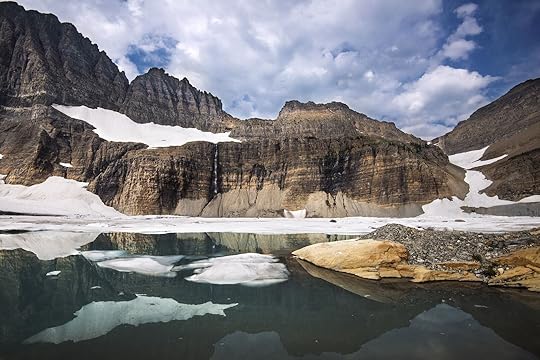
The Grinnell Glacier, one of many melting at an alarming rate in Montana’s Glacier National Park due to climate change. Photo: Glacier National Park/Tim Rains
As of 2025, the Earth’s most sensitive ecological zones are teetering on the edge. Scientists are regularly warning that we’re perilously close to the point of no return from planetary damage. The Doomsday Clock (a symbol set by the Bulletin of the Atomic Scientists to reflect humanity’s proximity to catastrophe) now stands at just 89 seconds to midnight — the closest it’s been since the measurement started in 1947. Researchers are starting to call it the “polycrisis” era, where we’re on the cusp of triggering multiple tipping points that could make a complete recovery impossible.
In 2024, the planet was more than 1.5 degrees celsius hotter compared to pre-Industrial levels — widely considered the global warming limit to avoid the most devastating impacts of climate change. Long-term, that could lead to abrupt global changes: the collapse of major ice sheets, a complete dieback of the Amazon rainforest, a loss of arctic permafrost that releases unheard of amounts of stored methane into the atmosphere.
When approached from that viewpoint, it’s easy to make the argument that we no longer have the luxury of caring if practices to protect the planet are accessible to all. But by that logic, international tourism shouldn’t exist at all, as about 2.5 percent of CO2 released annually comes from commercial aviation. (Nor should most energy or livestock production.) And since efforts like carbon removal and sustainable fuel initiatives aren’t keeping up with the growing demand for travel, it’s enough to raise the question of whether the world should even be as accessible as it is.

Tourism can exacerbate both environmental concerns and income inequality concerns. Shown here: an anti-tourism sign in the Canary Islands, a region known for growing overtourism problems. Photo: svf74/Shutterstock
But there’s an even bigger price to pay. A world divided into those who can afford to experience the planet’s wonders and those who can’t comes with the threat of worsening the already-very-real effects of global income equality, both between individuals and between developed and developing countries. The differences in health, education, housing, and quality of life between the haves and have-nots on the world stage is stark and alarming.
Charging $1,500 for a gorilla trekking permit is not going to drive up the cost of living for locals overnight. But exposure to the natural world through travel can increase empathy and help people see first-hand what needs to be protected. So what happens when everything in nature is commodified, and citizens have to choose between paying for healthcare or paying to access the great outdoors near their home?
Some destinations try to address the balance between exclusivity and accessibility. Rwanda offers steep discounts on gorilla trekking for residents and students, manages the park under the Rwandan government, and reinvests revenue in communities. Pikaia Lodge takes local schoolchildren on park trips and provides training and career development for staff. Divers Den offsets pricier overnight trips with more affordable snorkeling options. Elsewhere, only tourists who are willing to pony up for sustainability efforts are allowed in, such as Bhutan, which has a mandatory $100 per person, per day fee attached to every tourist visa.

Bhutan’s steep visa fees keep tourist numbers low while bringing in a high tourism spend per person. Photo: sprabbito/Shutterstock
Based on emerging research and real-world case studies, it’s clear there’s no one-size-fits-all model for balancing conservation and access. Strategies that seem to work well include creating zoning and buffer areas to protect flora and fauna (as with the Great Barrier Reef), integrating Indigenous communities into management (as with Canada’s Great Bear Rainforest), and effectively reinvesting tourism funds into local infrastructure (as seen in Rwanda and safari destinations like Kenya). Tiered pricing and free access for residents, students, or scientists can help maintain local accessibility. Choosing destinations with less overtourism pressures can also help — the world is large with many beautiful destinations, not just those that constantly pop up on social media.
The most sustainable models need to recognize both the urgency of environmental protection and the necessity of social equity. When the environment takes precedence, travelers may need to seek out more affordable “dupe” destinations. In some cases, restricted access may be necessary now to ensure these places survive for future generations.
“Limiting visitors is not elitism,” says Norman Brandt, of the Galápagos’ Pikaia Lodge. “It’s ecological necessity.” 
April 30, 2025
The Sustainability Initiatives That Each Major US Airline Is Taking to Make Flying Greener

Flying commercial aircraft is a carbon-intensive activity. A typical domestic shorthaul flight burns about 2.5 metric tons of fuel per hour, emitting some 7.9 tons of CO2 – roughly the same as driving the average car for 1.7 years. The Air Transport Action Group recorded 35.3 million commercial flights in 2023, with separate estimates for air travel’s total environmental impact noting the industry accounts for between 2.5 and four percent of total carbon emissions globally.
That is significant, but the news isn’t all bad – across the industry major airlines and third-party businesses and organizations are researching, developing, and scaling a variety of ways to significantly reduce the impact of flying. Some of these, like on-board recycling programs, are visible right now to flyers, but much is happening behind the scenes in labs, farms, and boardrooms far from the typical traveler’s sightline. To help you gain an understanding of what your favorite airline is doing to address its environmental impact, Matador spoke with airline reps and poured through studies and data sets to compile a rundown of what every major US airline is working on.
Efforts taken by all major airlines
Most major airlines have invested heavily in the development and growing deliverability of Sustainable Aviation Fuel (SAF) as a benchmark of their sustainability initiatives. Use of SAF has recently grown significantly year-over-year. Photo: Bulent Camci /Shutterstock
Before jumping into each airline’s efforts, I want to point out a few practices that my research for this story showed to be common among major airlines. These are important to include because, as I noted in a recent in-depth report on carbon removal and the airline industry, the process of decarbonizing air travel is a long-game effort that will likely never reach “absolute zero.” That is, it’s unlikely that commercial air travel will ever be entirely free of carbon pollution. Rather, it’s important that airlines pursue big-picture optimization strategies that allow them to minimize emissions while maximizing operational efficiency, as technologies like sustainable aviation fuel (SAF) and carbon capture ramp up.
This is happening in a few key ways across these airlines, including in buying the most fuel-efficient aircraft possible, something that is always ongoing as aircraft technology evolves and new ideas are tested. Each airline I spoke with for this story is in an active effort to get the most fuel-efficient planes as they are developed. Now and in the future, airlines are also working to fly the most fuel-efficient routes possible. This involves the elevation at which planes fly, and even the trajectory – which is partly why some flights heading across the Atlantic head way north toward Greenland and Iceland before dropping further south to land at their destinations, for example. Doing this can actually cut flight time and fuel demand as it allows planes to harness wind patterns and avoid bad weather.
New technology consistently evolves to help air travel be more efficient. Boeing’s ecoDemonstrator program tests and implements technologies aimed at improving fuel efficiency and reducing emissions. In 2024, the program evaluated 36 technologies, including the use of sustainable aviation fuel blends, single-engine taxiing, and advanced flight path optimization – an example of a technology that is benefitting airlines now. Looking ahead, United’s and Delta’s investments in JetZero’s “blended-wing body” aircraft, known as the Z4, integrates the wings and fuselage into a single, wide airframe, enhancing aerodynamic efficiency and potentially reducing fuel consumption by up to 50 percent per passenger mile compared to traditional aircraft. This could be used in commercial flights as soon as 2027.
All major US commercial airlines have invested in SAF and have partnered with producers to help scale its production and use. Most now offer options for customers to purchase SAF during the process of buying a ticket – which dollar for dollar is more effective than buying a carbon offset. Lobbying industry and government partners is ongoing, as well, among airlines. JetBlue, for example, told me it has been active in pushing for the FAA to modernize its scope and operations to line up with airlines’ sustainability goals.
Alaska and Hawaiian Airlines sustainability initiatives include pioneering waste reduction and recycling
Photo: Alaska was the first US commercial airline to ditch plastic water bottles in favor of boxed alternatives — and many airlines still haven’t followed suit. Andrew Mauro /Shutterstock
On September 18, 2024, Alaska Airlines completed its acquisition of Hawaiian Airlines. In addition to merging two competitive airlines into a unified force that could better compete with the “Big 4” US airlines, the merger brought together a collection of unique approaches to airline sustainability practices. In 2021, Alaska ditched plastic water bottles in favor of boxed water. This followed it being the first airline to develop an onboard recycling program and to eliminate plastic cups in its food and drink service.
Alex Da Silva, Regional Communications Director with Hawaiian, spoke with Matador via email about some of the company’s more under-the-radar sustainability initiatives.
“In 2024, we partnered with Debrand to divert more than 8,000 pounds of end-of-life pilot uniforms from landfills,” Da Silva says. He also noted that, “Hawaiian has a commitment to source more local food and beverage for its catering service, which supports food production and helps lift Hawaii-based companies, all while reducing emissions from the shipping of products. Hawaiian also developed a Travel Pono (Responsibly) program to equip visitors with information on how to enjoy the islands safely and respectfully, while having a positive impact on communities.”
The company is also looking ahead to SAF.
“SAF is the most effective technology to decarbonize aviation in the next two decades,” Da Silva says. “But it’s not at the scope, scale or cost today to realize its full potential.” The airline took part in a “first-of-its kind partnership with Microsoft to sell Scope 3 credits from SAF and to effectively co-invest in supply. This model is now widely used across the industry.”
Alaska is working with Shell to identify the best way to bring SAF to its hub in Seattle, and Hawaiian with Par Hawaii and Pono Pacific to jumpstart the SAF market in Hawaii. The company has also partnered with Microsoft and Twelve to support Twelve’s e-fuel production in Moses Lake, Washington, Da Silva noted.
“We worked on policy, permitting, advocacy for federal loans, and more – and we’ll be using the first gallons from that plant, once produced,” Da Silva says.
JetBlue sustainability initiatives happen mostly behind the scenes
JetBlue has been active in pushing for the FAA to modernize its scope and operations to line up with airlines’ sustainability goals.
Photo: Chad Robertson Media /Shutterstock
Across the country, New York-based JetBlue has been less vocal about its initiatives than Alaska, though its efforts are equally ambitious.
“We currently have eight public SAF partner offtakes, including four delivering partners in Neste, World Energy, Shell, and most recently, Valero which helped us bring the first regular SAF supply for commercial air travel to New York,” said Morgan Johnston with JetBlue Corporate Communications via email. “Along with the delivering partners, we also have four long-term SAF deals with partners and facilities expected to deliver in the future.”
Like Alaska, JetBlue has put onboard efforts into minimizing single-use plastics and incorporating recyclable materials where possible, though there’s still room for growth.
“Our multi-part emissions reduction strategy focuses on reducing climate-warming emissions where we safely can, building up sustainable aviation fuel that offers approximately an 80% lower carbon footprint and supporting industry changing and lower-carbon flying technologies such as alternative energy aircraft through JetBlue Ventures,” Johnston says.
This highlights why it’s important for flyers to look at a company’s full scope of operations when analyzing its plans to reduce environmental impact.
“Many of our sustainability efforts aren’t immediately apparent to travelers, such as our efforts to reduce fuel burn through use of newer more fuel-efficient fleet, fine-tuning our procedures and routing to optimize fuel consumption, and advocating for FAA modernization to improve system operations. More visible to customers would be our efforts inside the cabin to reduce unnecessary waste through use of reusable service items, recycling, and phasing out of single-use plastics.”
American Airlines sustainability initiatives include a massive effort to avoid contrails
Contrails, the ice-crystal trails formed by aircraft at high altitudes, trap heat in the atmosphere by acting like thin cirrus clouds, contributing to global warming. American is actively involved in progressing ways to avoid contrails. Photo: Velolosik /Shutterstock
American Airlines has set a goal to achieve net-zero greenhouse gas (GHG) emissions by 2050. To support this, it has set ambitious intermediate targets, including reducing greenhouse gas emissions intensity by 45 percent by 2035 and Scope 2 (indirect) emissions by 40 percent by 2035, both validated by the Science Based Targets initiative (SBTi). This includes a goal to induct zero-emissions, hydrogen-powered aircraft by 2032 or earlier, for which the airline is involved in partnerships with ZeroAvia and Embraer, and is involved in research for advanced aircraft designs like the Boeing X-66A with Transonic Truss-Braced Wing concept – which would use significantly less jet fuel to fly than today’s planes.
For SAF, the airline has entered long-term agreements with producers like Gevo and Infinium. With Infinium, American is supporting the development of eFuels—synthetic fuels made from captured CO₂ and renewable electricity—which offer a scalable path to decarbonizing aviation.
One initiative that American has loudly embraced, though, is contrail avoidance. Contrails, the ice-crystal trails formed by aircraft at high altitudes, trap heat in the atmosphere by acting like thin cirrus clouds, contributing to global warming. Though they don’t emit pollutants directly, their climate impact can exceed that of CO₂ emissions from the same flight, especially when they persist and spread.
“American is grateful for the opportunity to work with our partners at Google Research and Breakthrough Energy to help advance the science on contrail avoidance,” said Jill Blickstein, Vice President of Sustainability at American, in a press release. “The results from this small-scale test are encouraging, and, while clearly there are more questions to answer about how to operationalize contrails avoidance across our industry, we’re excited to have played a role in establishing this first proof point. And we’re looking forward to sharing what we learned with stakeholders in the aviation industry and beyond.”
United sustainability initiatives include a big investment in Direct Air Capture
A rendering of one of Heirloom’s forthcoming Direct Air Capture (DAC) plants in Louisiana. United invested heavily in Heirloom as part of its sustainability strategy. Rendering courtesy Heirloom
Like American, United has committed to be “net zero” by 2050 – and while claims like that are somewhat subjective and vague, its approach so far has been slightly different than those of its competitors. United invested in Heirloom, a direct air capture (DAC) company that uses limestone to extract CO₂ from the atmosphere. Heirloom is in the process of building two DAC plants in Louisiana. Through this partnership, United secured rights to remove up to 500,000 tons of CO₂, either for permanent storage or for conversion into synthetic fuel.
United also launched the United Airlines Ventures Sustainable Flight Fund, a $200 million initiative that invests in startups focused on decarbonizing air travel. The fund has supported companies developing sustainable aviation fuel (SAF), hydrogen-electric propulsion, and other clean technologies. Notably, United has invested in SAF producers like Cemvita, which utilizes carbon dioxide to create fuel, and has entered agreements to purchase significant volumes of SAF for future use. As such, the airline’s efforts , and as Matador has outlined, carbon capture, this type of proactive forward thinking (as opposed to buying carbon credits or offsets) is what is needed to make a notable difference in airline emissions.
Southwest sustainability initiatives further Sustainable Aviation Fuel
The ethanol used in Sustainable Aviation Fuel (SAF) is often derived from fermenting sugars in corn starch at a refinery like this. Southwest has heavily invested in SAF as part of its “Nonstop to Net Zero” initiative. Photo: FUN FUN PHOTO /Shutterstock
Southwest is also on the “net zero by 2050” bandwagon. Its “Nonstop to Net Zero” strategy includes the ongoing effort of modernizing its fleet with fuel-efficient Boeing 737 MAX aircraft, aiming to replace 10% of its total jet fuel consumption with sustainable aviation fuel (SAF) by 2030, and electrifying 50% of eligible ground support equipment by the same year. Additionally, Southwest plans to eliminate single-use plastics from inflight service where feasible by 2030 and reduce energy utilization at its Dallas headquarters by 50% by 2035.
Distinctively, Southwest has invested in the development of SAF through its acquisition of SAFFiRE Renewables, a company focused on producing renewable ethanol from corn stover, which can be converted into SAF. The airline’s “Repurpose with Purpose” program upcycles used aircraft seat leather into new products.
Delta sustainability initiatives include reinventing Terminal C at LaGuardia
Delta has invested $4 billion to transform Terminal C at New York’s LaGuardia Airport into a state-of-the-art travel hub that places sustainability at its core. Photo: cheap lev /Shutterstock
LaGuardia International Airport is a major hub for Delta, and it’s here that flyers can witness a new sustainability effort from the airline come to life over the coming years. Delta has invested $4 billion to transform Terminal C at New York’s LaGuardia Airport into a state-of-the-art travel hub that places sustainability at its core. The terminal features exterior glass that automatically tints based on weather and time of day to reduce heat and energy use at the gates, along with an advanced energy-efficient baggage system. Additionally, it includes an innovative ice-making plant that generates ice during off-peak hours to help cool the terminal during the day, easing demand on the power grid.
Beyond infrastructure, Delta has partnered with the Central Park Conservancy, Snug Harbor Cultural Center, New York Restoration Project, and the Botanical Garden of Staten Island to provide funding for these organizations’ stewardship and education efforts. The airline is modernizing its fleet by introducing next-generation aircraft that it claims are 28% more fuel-efficient per seat mile than the planes they replace, on average. Delta is ramping up use of SAF and has electrified a significant portion of its ground service equipment, deploying over 1,600 electric units since 2020.
Delta is a founding member of the EcoVadis Sustainable Airlines Initiative to coordinate decarbonization and waste reduction efforts with other airlines including KLM and Virgin Atlantic. Much like United’s Sustainable Flight Fund, Delta launched the Sustainable Skies Lab in 2023 to found research and development of sustainable aviation technologies. The airline is also collaborating with JetZero to develop the blended-wing-body aircraft. In addition, Delta is involved in an ongoing effort to eliminate nearly 7 million pounds of single-use plastics annually by switching to different products and packaging for food and drink service. 
The Cheapest Summer Flight Deals for 2025, According to New Travel Data

More than three million paid members use Dollar Flight Club to find cheap travel deals. That gives the company quite a lot of data to pull from when it comes to analyzing travel preferences, seasonal travel trends, and, most importantly, what destinations are regularly reached via budget-friendly flights. It just released a report on what destinations are the best for affordable summer travel, based on 500,000 airline booking data sets.
Overall, most airlines are dropping their estimates of how much money they think they’ll make this year. That’s bad news for them, but could be good news for travelers, as they may offer deals to help fill every seat they can. Unfortunately, more and more airlines are also relying on dynamic pricing, using AI technology to adjust ticket costs in real time based on everything from demand to changing fuel costs. “This dynamic pricing model means airfare can fluctuate frequently, requiring travelers to monitor fares closely,” advises Dollar Flight Club CEO Jesse Neugarten in the report.
Dollar Flight Club also advised other tips to save money based on its data, such as booking international flights four to six months in advance, and domestic flights two to three months in advance. That means you want to plan summer international trips by April or mid-May at the latest. To find the average round-trip price (in economy class, naturally), Dollar Flight Club looked at data from the top 10 busiest US airports by passengers data — so the flight estimates below should reflect price trends, no matter where you’re flying from in the US.
Here are the rest of the trends you can expect when it comes to summer flight deals.

Paris continues to be as popular as ever for summer travel. Photo: Catarina Belova/Shutterstock
After the COVID-19 pandemic, it became trendy for travelers to seize the day — and seize on the chance to travel again — by opting for classic bucket-list destinations they’d always wanted to visit. It seems that trend is here to stay, as the Dollar Flight Club report shows users are searching for summer flight deals to tried-and-true destinations.
The top international destinations are those ever-beloved by travelers: Paris, Tokyo, Rome, Cancun, and Bangkok. Surprisingly, some of those are also fairly affordable, showing that sometimes, you can find good summer flight deals, even to in-demand destinations.
If you’re looking for summer flight deals, these are 10 most affordable international cities to visit, along with the average lowest round-trip flight cost from the US this summer.
Dubai, Unites Arab Emirates: $900-$1,400Bangkok, Thailand: $750-$1,200Tokyo, Japan: $700-$1,100Barcelona, Spain: $620-$880Rome, Italy: $600-$900Dublin, Ireland: $550-$780Paris, France: $500-$800London, United Kingdom: $500-$750Mexico City, Mexico: $350-$550Cancun, Mexico: $226-$331If you have your sights set only on that dream European destination, London is still going to be your most affordable option, especially as you can book inexpensive connecting flights to other cities from Heathrow and Gatwick airports. But destinations like Amsterdam, Madrid, and Munich are cheaper than you may think, too.

The average cost of a round-trip flight to the cheapest destinations in Europe this summer. Photo: Dollar Flight Club
Looking for the beach? Here’s where to go.

Flights to Santo Domingo likely won’t break the bank this summer. Photo: Nick N A /Shutterstock
Travelers looking for summer flight deals to beach destinations can also use Dollar Flight Club’s data to plan their trips. While destinations like Honolulu and the Amalfi Coast will always be popular, travelers looking to save money should plan to fly further south. “These destinations offer the same turquoise waters and resort experiences,” offers the analysis, “often at half the price of more well-known alternatives.” Here are the average costs of round-trip flights from the US to five of the cheapest beach destinations this summer:Nassau, Bahamas: $636Belize City, Belize: $626Cartagena, Colombia: $621Liberia, Costa Rica: $614Santo Domingo, Dominican Republic: $548Cold weather is cool

Photo: JeniFoto/Shutterstock
According to the data, not all travelers are keen on getting a tan and breaking a sweat. Cool- and cold-weather destinations are also trending for summer travel, with the summer flight deals to match. The report attributes it to soaring summer temperatures in the US, which may make travelers keen to feel slightly cooler temps when they step outside. Fortunately, Dollar Flight Club found just as many summer flight deals to cool-weather destinations as it did warm ones. Here’s where to go.

Photo: Dollar Flight Club
To determine the costs above, Dollar Flight Club averaged the cost of round-trip flights from the 10 busiest airports in the US: Hartsfield-Jackson Atlanta International Airport (ATL), Dallas/Fort Worth International Airport (DFW), Denver International Airport (DEN), Chicago O’Hare International Airport (ORD), Los Angeles International Airport (LAX), Charlotte Douglas International Airport (CLT), Orlando International Airport (MCO), Harry Reid International Airport (LAS), Phoenix Sky Harbor International Airport (PHX), and Miami International Airport (MIA). It also asks customers when they sign up what destinations they’re most interested in visiting, and collects data from all searches, as well as its own internal data tracking systems. The costs above represent the lowest average round-trip price for travel between June and August 2025. 
This Road Trip Across the West of Québec Is the Ultimate Voyage Through Nature

The west of Québec is a patchwork of diverse natural landscapes waiting to be explored. From Abitibi-Témiscamingue’s rugged terrain and the Outaouais’ serene waters to the Laurentians’ towering peaks, Lanaudière’s rolling vistas, and Mauricie’s many charms, there’s so much you likely haven’t seen.
What does exploration look like in this corner of the province? That depends on you. Whether you spend your days hiking through dense forests, paddling quiet rivers, or finding new and memorable ways to soak in the surroundings, a road trip through this part of Québec invites you to connect with the province’s scenery in all its glorious, untamed splendour.
Go wild in Abitibi-Témiscamingue.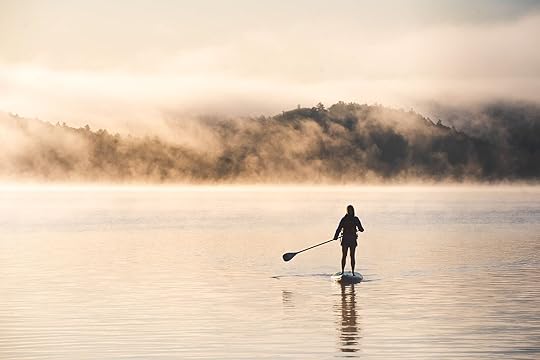 Parc national d'Opémican, Abitibi-Témiscamingue. Photo: C. Leduc
Parc national d'Opémican, Abitibi-Témiscamingue. Photo: C. Leduc Réserve faunique La Vérendrye, Abitibi-Témiscamingue. Photo: L. Jalbert
Réserve faunique La Vérendrye, Abitibi-Témiscamingue. Photo: L. Jalbert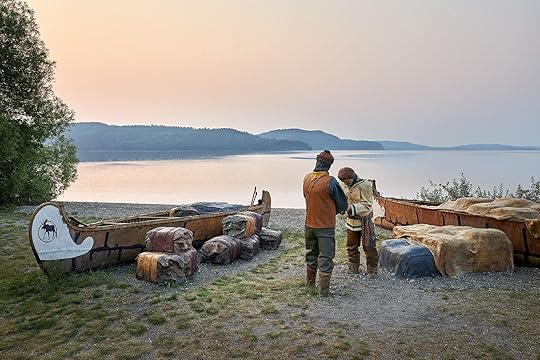 Obadjiwan-Fort Témiscamingue National Historic Site, Abitibi-Témiscamingue. Photo: L. Jalbert
Obadjiwan-Fort Témiscamingue National Historic Site, Abitibi-Témiscamingue. Photo: L. JalbertJust few hours’ drive from major cities in Ontario, Abitibi-Témiscamingue promises untouched wilderness with over 4,000 sparkling lakes and lush forests that are home to moose, beavers, and other woodsy critters. It’s an ideal escape to embrace the wild beauty of the Canadian Shield.
Tucked between the calm waters of Lake Timiskaming and Lake Kipawa, Parc national d’Opémican is a draw for outdoor activities like kayaking, canoeing, hiking, and stand-up paddleboarding — all set against the peaceful backdrop of lakeside cliffs. For the geologically inclined, Parc national d’Aiguebelle takes center stage with its unique pillow lava formations and towering rocks known as “giant’s kettles.”
More outdoor adventure awaits at the Réserve faunique La Vérendrye, where you can hike, fish, and canoe in one of the most vast and lake-filled areas of Québec. All that recreation might leave you curious about how Abitibi-Témiscamingue came to be the playground it is today. For a deeper exploration of the land’s history, the Lieu historique national d’Obadjiwan–Fort-Témiscamingue opens a window into the region’s Indigenous and fur-trading past. Discover the legacy of the First Nations peoples and early European settlers who trod here before you did while strolling through ancient forests and exploring the remains of a 17th-century trading post.
To truly unwind, set up your base camp at La Bannik. At one of its comfortable cottages overlooking the waters of Lake Kipawa, you can soak in your private outdoor hot tub after a day of exploring this phenomenal region.
Play lakeside in Outaouais. Kenauk Nature, Outaouais. Photo: Camille Labonté
Kenauk Nature, Outaouais. Photo: Camille Labonté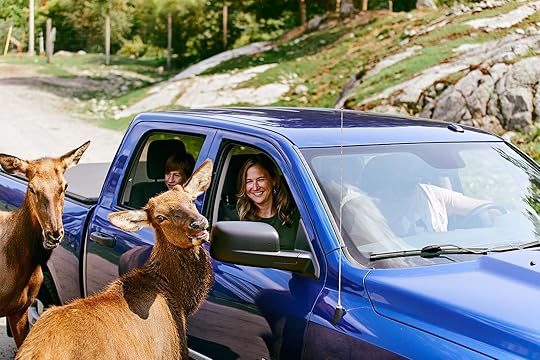 Parc Omega, Outaouais. Photo: M. Baril-Tessier
Parc Omega, Outaouais. Photo: M. Baril-Tessier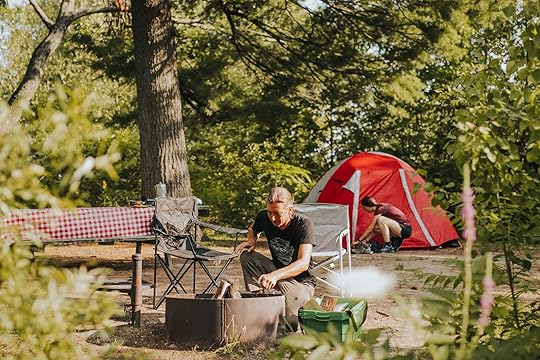 Parc national de Plaisance, Outaouais. Photo: C. Labonté
Parc national de Plaisance, Outaouais. Photo: C. LabontéHome to over 15,000 lakes and rivers, Outaouais seamlessly blends rich cultural heritage with stunning natural beauty. Here, you can explore one of North America’s oldest (and largest) private nature reserves and stay in the world’s largest log cabin.
At Kenauk Nature, find off-grid, eco-friendly chalets deep in the wilderness. With your beautiful lakeside chalet comes access to an impressive fish and game reserve and all the recreation it entails — fishing, canoeing, hiking, you name it. If wildlife is your focus, go for a drive-through safari at Parc Omega to see deer, bison, wolves, and moose across 1,500 acres, or birdwatch at Parc national de Plaisance. Located on a series of islands along the Ottawa River, the park’s marshlands and forests are inhabited by more than 250 bird species. You can call it home, too, by spending a night at one of the campgrounds. Alternately, enjoy a refined stay at Fairmont Le Château Montebello, the world’s largest log cabin, which combines rustic charm with five-star amenities including a pool and cabanas in summer.
The more you explore the region, the more you’ll see that the Outaouais is dotted with surprising discoveries like the Chutes du Moulin, a dramatic 35-metre waterfall with hiking trails that provides historical insights into North Nation Mills. Elsewhere, along the Petite-Nation River, you can paddle to Baie Noire or Baie de la Pentecôte, or hike accessible trails like the floating Zizanie-des-Marais path and the Marais-aux-Rubaniers boardwalk. And that’s just the start of the outdoor activities that await.
To up the adrenaline, Arbraska Laflèche offers zip lines, suspended bridges, and an underground adventure in the Laflèche Cave, one of the largest in the Canadian Shield. See if you can catch a glimpse of the bats that live here, perched high on the cave walls.
Reach new heights in the Laurentians. Tremblant - Ziptrek, Laurentides. Photo: Tourisme Laurentides
Tremblant - Ziptrek, Laurentides. Photo: Tourisme Laurentides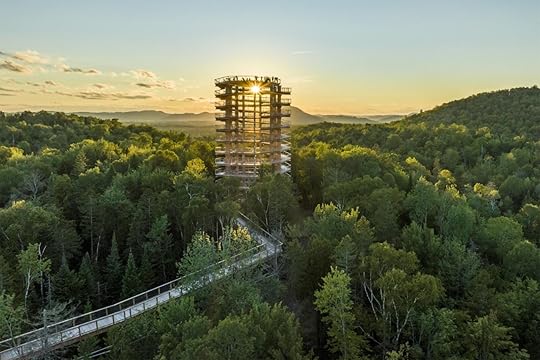 Sentier des cimes, Laurentides. Photo: Tourisme Laurentides
Sentier des cimes, Laurentides. Photo: Tourisme Laurentides Parc régional Montagne du Diable, Laurentides. Photo: N. Aubry
Parc régional Montagne du Diable, Laurentides. Photo: N. AubryThe Laurentians, just north of Montréal, is a mountain range with plenty going on between its peaks — think nature parks, dense forests, and endless lakes alongside vibrant towns and villages. The region appeals to both outdoor adventurers and those seeking local culture.
Mont-Tremblant is one of the finest snapshots of the area, with year-round activities like zip lining, mountain biking, hiking, and swimming. In summer, the lively village becomes a hub for dining, shopping, and cultural events. Under an hour away, Saint-Sauveur Valley entertains with art galleries and boutiques, as well as the exciting Sommet Saint-Sauveur Water Park. Don’t miss one of the season’s highlights: the Festival des Arts de Saint-Sauveur, celebrating music and dance.
Cycle or hike Le P’tit Train du Nord, a 234-kilometre linear park along a former railway. Explore charming villages and enjoy farm-to-table dining at places like Maison de Soma, where regional agricultural traditions shine in every dish. For a bird’s-eye perspective of the area, head to the 40-metre-tall tower at Sentier des cimes Laurentides. This treetop adventure gives panoramic views of the Laurentians forests along an accessible boardwalk.
The Laurentians are also home to beautiful regional parks like Poisson-Blanc, Kiamika, and Montagne-du-Diable — ideal for hiking, canoeing, camping — and a long list of other scenic venues for outdoor experiences.
Breathe deep in Lanaudière-Mauricie. Auberge du Lac-à-l'Eau-Claire, Mauricie. Photo: Véronique Wilfort
Auberge du Lac-à-l'Eau-Claire, Mauricie. Photo: Véronique Wilfort Auberge du Lac Taureau, Lanaudière. Photo: Damien Lair
Auberge du Lac Taureau, Lanaudière. Photo: Damien LairLanaudière and Mauricie are two special regions between Montréal and Québec City that are true testaments to Québec’s wild beauty. Stroll through vast forests, swim in crystal-clear lakes, and experience nature’s raw allure.
Visit Auberge du Lac Taureau, a luxury getaway set on the shores of a pristine lake, where you can kayak, fat bike, or simply soak in the surrounding tranquility. Just a short distance away, Auberge du Lac-à-l’Eau-Claire is a lakeside inn set amid thousands of acres of forest. It features a renowned aquatic center with an Olympic-sized pool, a health center, and a variety of activities, including fishing, wildlife observation, and water sports.
Minutes from La Mauricie National Park, Nature Nature offers eco-friendly-chic accommodations for a more rustic escape. Choose from micro-cabins or traditional camping and enjoy the beauty of the St. Maurice River. Whether hiking nearby mountains or relaxing by the campfire, this peaceful spot invites a deeper connection with nature.
Food lovers should take a guided forest walk with Marcheur des Bois to forage for the unique flavors of the forest, followed by a gourmet meal that highlights the land’s seasonal bounty. Meanwhile, adventure-seekers will love Batiscan River Park, featuring 20 kilometres of hiking trails and 10 kilometres of mountain biking paths. With the added excitement of via ferrata and zip lining, it’s a perfect stop for families to explore, with fun for all ages and abilities.
As you’ll quickly see, road-tripping the west of Québec is a complete voyage through nature. Breathtaking mountains, wild forests, tranquil waters, vibrant villages, stunning lakes, charming towns — the list of what awaits is long and intriguing. Whether you’re seeking outdoor adventures, immersive accommodations in the wilderness, rich cultural experiences, or a calm retreat to reconnect with nature, this is the Québec for you. 
Explore more road trip inspiration in Québec
Road Trip to the Gaspé Peninsula to Uncover the Best of Seaside Québec
Québec Is a Delicious Slice of Canada. This Road Trip Is Proof.
Wildlife Lovers, Pack Your Bags: This Québec Road Trip Is a Whale of a Time
Québec Is a Delicious Slice of Canada. This Road Trip Is Proof.

If food is a window into the soul, then Québec is as soulful as a destination gets. From multicultural Montréal to bountiful Laval, artisanal Montérégie to the gourmet Eastern Townships, gastronomy is one of the best ways to experience the province. That’s why Québec’s culinary landscape is so robust, with ample opportunities to connect with the passionate producers, chefs, and artisans who make the province’s dining scene so unforgettable.
Whether you’re devouring local cheese, indulging in fine wines, or enjoying a scenic river dinner cruise, Québec’s bounty of food and drink experiences promises an adventure for all the senses. Here’s what you’ll see, taste, savour, and be surprised by on a culinary road trip through Québec.
Eat your way through Montréal. Montréal. Photo: Jacklyn Barber
Montréal. Photo: Jacklyn Barber Montréal. Photo: Croisières AML
Montréal. Photo: Croisières AML Montréal. Photo: Croisières AML
Montréal. Photo: Croisières AMLMontréal pulses with energy, from its lively arts community and bustling festivals to its rich history and world-class museums. The food scene is no exception.
Let your hunger guide you through the city. First up, a true local delicacy: bagels boiled in honey-sweetened water and baked in wood-fired ovens. Montréal is home to several legendary bagel bakeries, including Fairmount Bagel and St-Viateur Bagel. Of course, no visit to Québec’s largest city is complete without an order of poutine, too. Keep an eye out for the iconic dish of fries, cheese curds, and gravy between trips to public markets like Atwater and Jean-Talon and meals at some of the best restaurants in Canada.
Another way to immerse yourself in the food scene is to let experts lead the way. Get a taste of the city while getting your steps in on a gourmet walking tour with certified guides who know their history and all the best places to eat. Don’t miss an opportunity to dine at Vin Mon Lapin, Restaurant Beba, Mastard, or Restaurant Toqué. Later on, set sail on a dinner cruise along the St. Lawrence River for supper and a show — make it extra memorable by booking a cruise during the annual Loto-Québec International Fireworks Festival to see the sky bursting with colour as you dine.
The deeper you dive into Montréal’s food scene, the more you’ll see that it’s leading the way in urban agriculture, too. From urban farms to food festivals, city life meets greenspaces to highlight the region’s commitment to sustainability and Montréal’s unique culinary identity. Get a feel for it before discovering what treats lie just beyond the city.
U-pick your picnic in Laval. Ferme Forget, Laval. Photo: Tourisme Laval
Ferme Forget, Laval. Photo: Tourisme Laval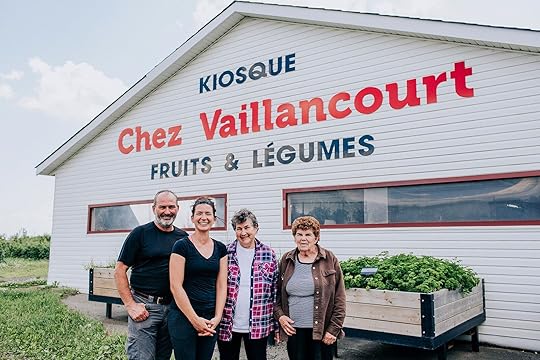 Ferme Vaillancourt, Laval. Photo: Tourisme Laval
Ferme Vaillancourt, Laval. Photo: Tourisme Laval Agneaux de Laval. Photo: Tourisme Laval
Agneaux de Laval. Photo: Tourisme LavalLaval, with its lush landscapes and charming farms in the greater Montréal area, is a place to explore Québec’s rich agricultural heritage by getting your hands dirty in the fields. Whether it’s harvesting fresh fruits, vegetables, or regional specialties, you’ll get a true taste of the land, connecting you directly to the terroir and the farm-to-table experience.
Laval is home to a number of family-run farms that specialise in fresh produce. At Ferme Marineau and Ferme Chez Vaillancourt, you can pick your own strawberries, pumpkins, and veggies, while La Ferme Forget offers berry and flower picking alongside a giant corn maze in the fall. If you’re in the mood for something savoury, Agneaux de Laval produces eco-friendly lamb, and its boutique sells fresh, locally made products.
For something truly special, a visit to Le Paradis des Orchidées is a must. This greenhouse is home to over 30,000 orchids in more than 1,000 varieties, including many award-winning species. Whether you’re a horticulture enthusiast or simply appreciate the beauty of flowers, it’s a perfect stop on your culinary journey.
Raise a toast in Montérégie. Cidrerie Minot, Montérégie. Photo: Tourisme Montérégie
Cidrerie Minot, Montérégie. Photo: Tourisme Montérégie Sucrerie de la Montagne, Montérégie. Photo: Tourisme Montérégie
Sucrerie de la Montagne, Montérégie. Photo: Tourisme MontérégieMontérégie is south of Montréal, just a short drive away. With a bounty of vineyards, cideries, microbreweries, and artisanal food producers, this area offers an authentic and delicious taste of Québec’s agricultural roots and heritage. One highlight: sampling the region’s signature ice cider.
Québec is home to a network of artisans who preserve and pass down traditional craftsmanship. The ÉCONOMUSÉE® experience allows visitors to meet these artisans, learn about their crafts, and enjoy the products they create. Stop by the Cider Maker ÉCONOMUSÉE® in the Montérégie region, where the Demoy family’s cider house invites you on a tour from the orchard to the production facilities, culminating in a tasting of its award-winning sparkling and still ciders. Other cider stops along the route include the family-run Michel Jodoin and C.E.Petch, which also has a petting zoo to visit.
Another unmissable stop in Montérégie is Sucrerie de la Montagne, an authentic sugar shack in the heart of a maple forest. Here, you can witness Québec’s maple syrup tradition year-round while enjoying a customary meal in a cozy, heritage-filled setting.
Cycle and snack along the Véloroute Gourmande. Photo: Laboratoire Culinaire Nord, Montérégie. Photo: Tourisme Montérégie
Photo: Laboratoire Culinaire Nord, Montérégie. Photo: Tourisme Montérégie Siboire Dépôt, Eastern Townships. Photo: M. Dupuis
Siboire Dépôt, Eastern Townships. Photo: M. Dupuis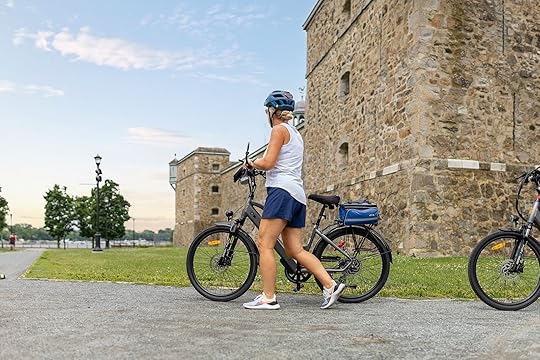 Lieu historique national du Fort-Chambly, Montérégie. Photo: Tourisme Montérégie
Lieu historique national du Fort-Chambly, Montérégie. Photo: Tourisme MontérégieThe Véloroute Gourmande, a 235-kilometre cycling route through Montérégie and the Eastern Townships, offers an unmatched adventure for those who prefer to explore on two wheels. It’s an invitation to relish the region while pedaling through breathtaking landscapes of lakes, mountains, and fields. Along the way, discover over 130 gourmet stops, including Laboratoire culinaire Nord, where new menu items are imagined in the test kitchen, and Siboire Dépôt, a brewery and gastropub in Sherbrooke housed in a heritage building that was once a train station.
One of the highlights of Montérégie is the Fort Chambly National Historic Site. This is the perfect spot for a picnic by the Richelieu River while taking in the stunning views of the stone fort and surrounding rapids. Be sure to visit FG Chocolatiers for dessert, a chocolate lover’s dream in the heart of Vieux-Chambly.
The route is dotted with regional producers, from vineyards to cheese makers, like the award-winning Fromagerie des Cantons in the town of Farnham. A stop here gives you the chance to taste the difference that using exclusively high-quality milk from brown Jersey cows makes when producing homemade cheese.
In the Eastern Townships, take a break to soak in the beauty at the Artria Open-Air Museum, with over 60 stunning sculptures gracefully adorning the trails.
A road trip through Québec is a buffet of experiences that connect the land, the people, and the traditions of the province. Whether you’re cruising the St. Lawrence River in Montréal, cycling through Montérégie and the Eastern Townships on the Véloroute Gourmande, or exploring local farms and food producers in Laval and Montérégie, there’s something for every food lover to enjoy. Pack your bags, bring your appetite, and prepare to be surprised. 
Explore more road trip inspiration in Québec
Road Trip to the Gaspé Peninsula to Uncover the Best of Seaside Québec
This Road Trip Across Western Québec Is the Ultimate Voyage Through Nature
Wildlife Lovers, Pack Your Bags: This Québec Road Trip Is a Whale of a Time
Road Trip to the Gaspé Peninsula to Uncover the Best of Seaside Québec

Connecting the Great Lakes to the Atlantic Ocean, the St. Lawrence River is a powerful source of North American history and heritage. In Québec, it also signals a special kind of magic. Flowing through Montréal and slowly opening up towards the sea, the St. Lawrence traces a journey into the region’s beating maritime heart. Travellers who follow the river east are rewarded with a rare view of the province — one filled with endlessly photographable shores, deliciously inviting Québecois towns, and quintessential seaside charm.
Along Québec’s impressive peninsula — from a drive to remember through Centre-du-Québec, Chaudière-Appalaches, and Bas-Saint-Laurent to activity-rich Gaspésie and the inviting twin towns of Gaspé and Percé — this coastal odyssey promises unexpected experiences at every turn. If you haven’t uncovered the Peninsula Path, you haven’t truly explored Québec.
Centre-du-Québec: Riverside charm and culinary delights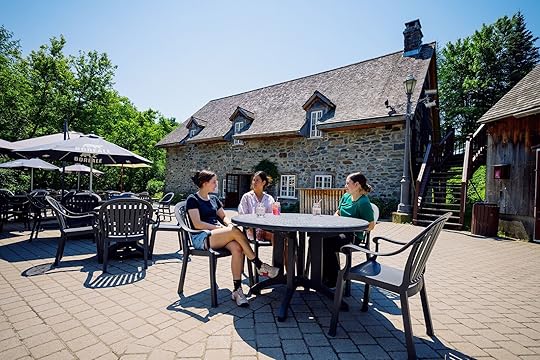 Moulin Michel de Gentilly, Centre-du-Québec. Photo: Phil Têtu
Moulin Michel de Gentilly, Centre-du-Québec. Photo: Phil Têtu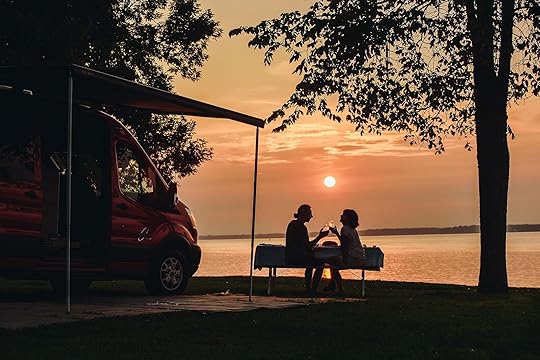 Camping Cap à la roche, Centre-du-Québec. Photo: Stéphanie Allard
Camping Cap à la roche, Centre-du-Québec. Photo: Stéphanie Allard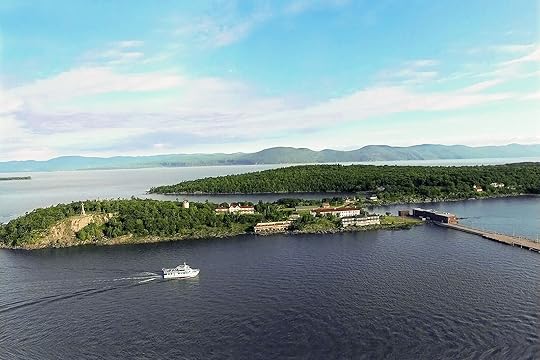 Chaudières-Appalaches. Photo: Croisières AML / Nova Film
Chaudières-Appalaches. Photo: Croisières AML / Nova FilmOnce you’re able to pull yourself away from Montréal’s urban delights, Québec’s best peninsular adventures begin along the Route des Navigateurs, a breathtaking road through the Centre-du-Québec, Chaudière-Appalaches, and Bas-Saint-Laurent regions. The first leg is the gateway to the St. Lawrence seaway. Scenic Route 132 hugs the river’s shores, introducing travellers to cultural vibrancy in the form of museums, galleries, landmarks, and maritime excursions, not to mention bursts of gastronomy.
Along the route, roadside stands peddle fresh produce and specialties like artisanal cheeses and smoked seafood. When you’re not gorging on just-off-the-vine berries, stop at casse-croûtes (Québecois diners) for quick but hearty bites that’ll leave you ready to hunker down for the night. That’s one of the great joys of the Route des Navigateurs: finding memorable lodging like riverside domes and rustic yurts where you can retreat beneath the starry skies — after catching picture-perfect sunsets on the St. Lawrence, of course.
There are countless places to stop and enjoy the river on Route 132. See how many you can hit as you make your way towards Bas-Saint-Laurent. To actually get out on the water, consider a morning cruise to historic Grosse-Île, a lovely island and a spot to explore more of Québec’s heritage.
Bas-Saint-Laurent: Tides, trails, and tastes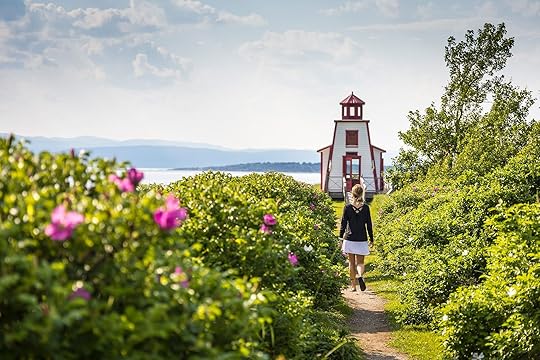 Kamouraska, Bas-Saint-Laurent. Photo: M. Dupuis
Kamouraska, Bas-Saint-Laurent. Photo: M. Dupuis Parc national du Bic, Bas-Saint-Laurent. Photo: A. Kismic
Parc national du Bic, Bas-Saint-Laurent. Photo: A. Kismic Canyon des Portes de l'Enfer, Bas-Saint-Laurent. Photo: Julien Gadbois
Canyon des Portes de l'Enfer, Bas-Saint-Laurent. Photo: Julien GadboisContinuing east along the peninsula, Bas-Saint-Laurent greets travellers with a landscape that’s pleasantly mellow in both its beauty and temperament. Food and culture lovers have no shortage of options here — the region is filled with local delicacies. You’ll find many of them in Kamouraska, one of the most beautiful villages in the province, with an idyllic main street and postcard-perfect 19th-century homes. For a taste of local products and culinary heritage, Côté Est is a renowned bistro that artfully showcases the region’s unique culinary identity, from sea to forest, through original discovery packages that highlight local products: seafood and fish from the St. Lawrence, regional meats, vegetables from market gardeners, and natural wines.
Another Bas-Saint-Laurent highlight is Parc national du Bic, where you can get the lay of the land from breathtaking panoramas at the Raoul-Roy Lookout or via paddling routes along the St. Lawrence’s secluded coves. Sleeping under the stars in a ready-to-camp yurt or cozy cabin is a popular choice for immersing yourself in the serene natural habitat.
Make sure to head inland to check out Terfa’s “Gates of Hell” — a plummeting canyon that gives way to exceptional hiking and a particularly memorable viewpoint from the province’s highest suspended footbridge. Or, try scouting for moose and other wildlife at nearby Duchénier Wildlife Reserve.
La Haute-Gaspésie and Matapédia: Between cliffs and clouds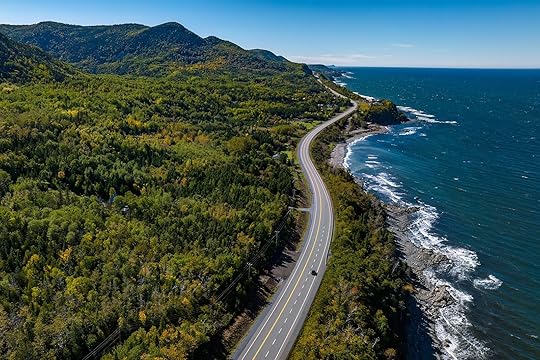 Route 132, La Haute-Gaspésie. Photo: S. St-Jean
Route 132, La Haute-Gaspésie. Photo: S. St-Jean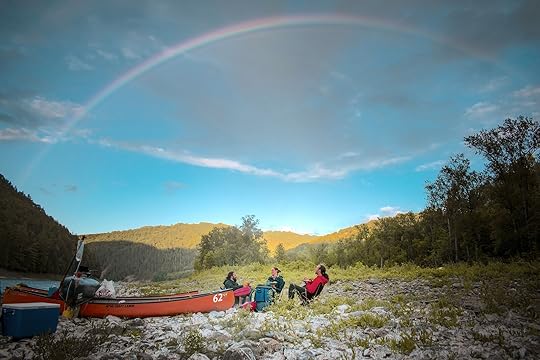 Nature Aventure, Matapédia Valley. Photo: C. Binette
Nature Aventure, Matapédia Valley. Photo: C. Binette La Vallée de la Framboise, Matapédia Valley. Photo: ÉCONOMUSÉE®
La Vallée de la Framboise, Matapédia Valley. Photo: ÉCONOMUSÉE®Entering La Haute-Gaspésie, the already striking landscape takes a turn for the dramatic. Cliffs appear on the horizon — towering rock formations that fall into the ever-widening river — while lighthouses and seaside homes dot the vista.
This area is a utopia for nature lovers, flanked by the St. Lawrence on one side and the forested peaks of the Chic-Choc Mountains on the other. Spend any amount of time hiking in Parc national de la Gaspésie and you’ll see what we mean. To make the most of your time here, there are campsites and cabins inside the park (plus the Gîte du Mont-Albert hotel for a four-star stay). Nearby, ample inns and bed and breakfasts add to the overall charm.
Make good use of your wheels to see what other outdoor adventures await in the Matapédia Valley, such as Nature Aventure, where you can pursue a full range of activities like canoeing, wildlife viewing, and even snorkeling with salmon. Guided or multi-day excursions dive deep into the 10 rivers (and then some) that punctuate this pristine pocket of wilderness.
For a gentler outing in the valley that rewards with some of the region’s sweetest flavours, La Vallée de la Framboise (aka raspberry central) beckons. Celebrate all things juicy by harvesting fruit, sampling products like jams and pies, and touring the on-site distillery for an inside look at how its trademark raspberry liqueur is made.
Gaspé and Percé: Icons, islands, and ocean encounters Percé, Gaspésie. Photo: S. St-Jean
Percé, Gaspésie. Photo: S. St-Jean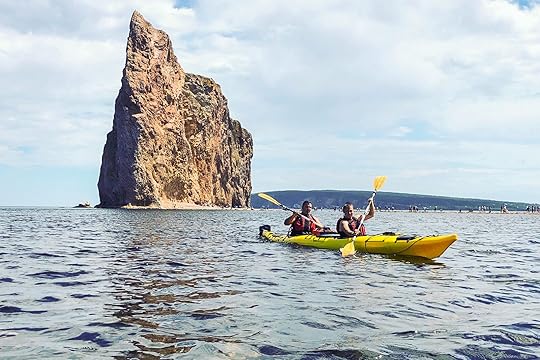 Photo: Camp de Base Gaspésie
Photo: Camp de Base GaspésiePerched at the peninsula’s tip, looking out towards the Gulf of St. Lawrence and the Atlantic Ocean beyond, the iconic towns of Gaspé and Percé are the embodiment of Québec’s coastal life. Days here are powered by seafood and salty breezes as you relish the small-town atmosphere.
Strolling the streets of Gaspé, you’re reminded that this is where explorer Jacques Cartier first planted a wooden cross in the name of France in 1534, unofficially bestowing Gaspé with the title of “the birthplace of Canada.” Nearby Forillon National Park’s draws take the shape of epic hikes and wildlife sightings. Let the folks at Cap Aventure, an adventure company based in Forillon, organize a sea kayaking excursion where you’ll enjoy the panoramas while paddling among seals and seabirds. Another option is to look for whales by boat on a Gaspé Bay Cruises outing.
A bit farther down the coast, the views in Percé will stop you in your tracks — the famous Percé Rock and Bonaventure Island cast an epic picture just off the coast. Outdoor options also continue on this leg of the Peninsula Path, with two national parks begging to be visited. At Parc national de l’Île-Bonaventure-et-du-Rocher-Percé, thousands of northern gannet birds fill the skies, and boat tours around Percé Rock provide unobstructed photo opportunities.
For an exploration hub near Percé, Camp de Base Gaspésie delivers cozy accommodations (waterfront chalets, anyone?) and even more outdoor adventures (think biking, stand-up paddleboarding, and fishing) if you can tear yourself away from the gourmet bistro on site.
Few simple acts are as soul-restoring as gulping fresh sea air. In these regions of Québec, your access is unlimited. From its awe-inspiring scenery and maritime heritage to its windows into French-Canadian coastal culture, a journey through peninsular Québec will have you slowing down, soaking up your surroundings, and realising you’d be hard-pressed to find a more revitalising coastal road trip anywhere. 
Explore more road trip inspiration in Québec
Wildlife Lovers, Pack Your Bags: This Québec Road Trip Is a Whale of a Time
Québec Is a Delicious Slice of Canada. This Road Trip Is Proof.
This Road Trip Across Western Québec Is the Ultimate Voyage Through Nature
Wildlife Lovers, Pack Your Bags: This Québec Road Trip Is a Whale of a Time

Québec City. Charlevoix. Saguenay–Lac-Saint-Jean. Côte-Nord. In Québec, this is where freshwater meets the sea and whales roam free. Starting from the province’s storybook oldest city, this journey along the St. Lawrence River takes you through rolling hills before heading north towards a mesmerizing fjord and stop-you-in-your-tracks coastal landscapes. Whether you’re drawn by nature, adventure, or the quiet beauty of the road, these regions offer a deep connection to what makes Québec so inspiring.
Québec City: Where centuries speak and nature calls Québec, city and area. Photo: Jean-Francois Frenette
Québec, city and area. Photo: Jean-Francois Frenette Québec, city and area. Photo: Croisières AML / Sébastien Saint-Jean
Québec, city and area. Photo: Croisières AML / Sébastien Saint-JeanThe magic begins as you drive northeast from Montréal to Québec City, one of North America’s oldest big cities. Québec City has a classic quality that’s enhanced by its scenic perch overlooking the St. Lawrence. Cobblestone streets wind through the Old Town, showcasing 17th-century architecture, cozy cafes, and the enchanting Petit-Champlain district where colorful storefronts and artisan shops sit beneath Upper Town’s cliffs.
Yet Québec City isn’t all history and stone walls. A short drive from the city center, Montmorency Falls roars into the river below. At 83 metres, it’s taller than Niagara and just as breathtaking, a perfect contrast to the architectural beauty of the walled city.
For a special introduction to Québec City, take a sunset cruise on the river. Coast along the water as golden light hits the skyline, creating spectacular views of the surrounding cliffs and the Fairmont Le Château Frontenac — one of the most photographed hotels in the world. This impressive landmark is one to see (and an excellent place to spend the night).
Charlevoix: Delicious views, delicious flavours Parc national des Grands-Jardins, Charlevoix. Photo: N. Hallet
Parc national des Grands-Jardins, Charlevoix. Photo: N. Hallet Centre d'interprétation et d'observation de Pointe-Noir, Charlevoix. Photo: Dominique Lafond
Centre d'interprétation et d'observation de Pointe-Noir, Charlevoix. Photo: Dominique Lafond Charlevoix. Photo: Fairmont Le Manoir Richelieu
Charlevoix. Photo: Fairmont Le Manoir RichelieuLeaving Québec City behind means entering the must-see Charlevoix region (roughly 1.5 hours away by car). Charlevoix is a masterpiece of natural contrasts: rugged mountain peaks softened by rolling green hills and glacial valleys carved by the slow passing of time and water. Perched by the mighty St. Lawrence, Charlevoix is famous for its beauty, outdoor activities, and the high-quality products defined by its terroir.
Nature lovers can revel in the dramatic terrain of national parks like Parc national des Grands-Jardins and Parc national des Hautes‑Gorges-de-la-Rivière‑Malbaie, where the trails are stunning, the vistas are sweeping, and the air is tinged with pine trees and possibility. Charlevoix is also where this road trip’s maritime exploration really kicks off, with must-dos like the supremely beautiful St. Lawrence Route and the Pointe-Noire Interpretation and Observation Centre where you can spot belugas from land. Head along the river to towns like La Malbaie and then Baie-Sainte-Catherine for whale-watching tours in the world-renowned Saguenay–St. Lawrence Marine Park.
For those who prefer their adventures paired with a glass of wine, the Flavour Trail makes for a delightful farm-to-table itinerary. It’s a journey of artisanal cheeses, crisp ciders, local chocolates, and fresh-baked breads, all of which is highlighted on local restaurant menus.
Charlevoix also has a wealth of accommodation options. For a luxurious stay, the Fairmont Le Manoir Richelieu sits by the river and provides both opulence and proximity to the action. Meanwhile, Le Germain Charlevoix Hotel & Spa in Baie-Saint-Paul is a contemporary retreat set in an artistic village where creativity and countryside collide. Make it your home base as you check out the Charlevoix region’s wealth of outdoor activities.
Saguenay–Lac-Saint-Jean: Into the heart of the fjordlands L'Anse Saint-Jean, Saguenay–Lac-Saint-Jean. Photo: OYÉ
L'Anse Saint-Jean, Saguenay–Lac-Saint-Jean. Photo: OYÉ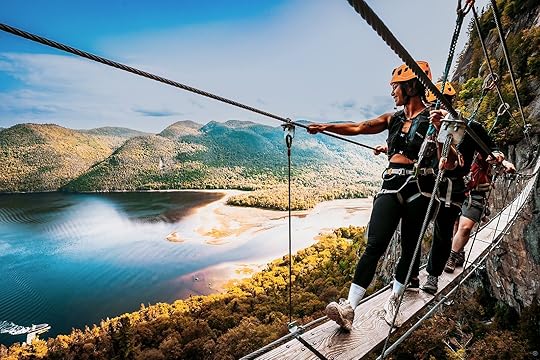 Parc national Fjord du Saguenay, Saguenay–Lac-Saint-Jean. Photo: OYÉ
Parc national Fjord du Saguenay, Saguenay–Lac-Saint-Jean. Photo: OYÉ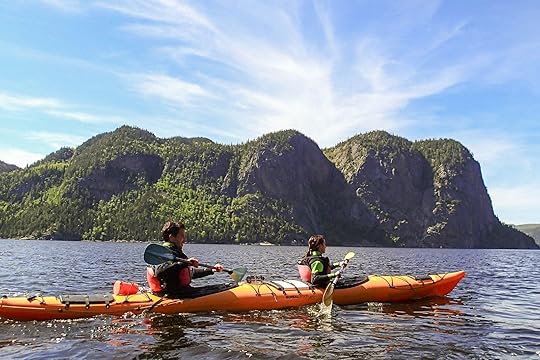 Saguenay Aventures, Saguenay–Lac-Saint-Jean. Photo: Saguenay Aventures
Saguenay Aventures, Saguenay–Lac-Saint-Jean. Photo: Saguenay AventuresAs the road moves inland from Charlevoix, it enters a region defined by majesty. The Saguenay River leads the way, guiding you to some of Québec’s most striking natural beauty.
Carved by glaciers thousands of years ago, the Saguenay Fjord is over 100 kilometres long, surrounded by towering cliffs and epic scenery. Follow the Route du Fjord, a drive that’s more of a cinematic experience than a tourist trail. It’ll lead you through the Saguenay region, allowing you to experience both the grandeur of the fjord and the character of the local communities.
Villages like L’Anse-Saint-Jean unfold along the way, providing glimpses into Québec’s quieter side, where the pace slows and the natural world rises to meet you. This is a haven for kayaking and photography, with the fjord and the river providing a spectacular backdrop. Parc national du Fjord-du-Saguenay is also here, with hiking trails that hug the cliffs and via ferrata climbing routes that provide adrenaline-fueled access to unparalleled views. Check in with Saguenay Aventures for more eco-adventures in the area, including paddleboarding, canyoning, and unique hiking trips.
While whales steal most of the wildlife headlines, don’t forget the porpoises. These wonderful dolphin-like animals dart and dance throughout the fjord’s waters. Book a Zodiac boat tour to get a front-row seat to their playful grace. For those who want to linger, Village-Vacances Petit-Saguenay offers cozy chalets and campsites set among the trees. And for a night under the stars with a twist, Parc Aventures Cap Jaseux lets you sleep in a glass dome, a treehouse, or even a suspended sphere.
Côte-Nord: Endless shores and epic wildlife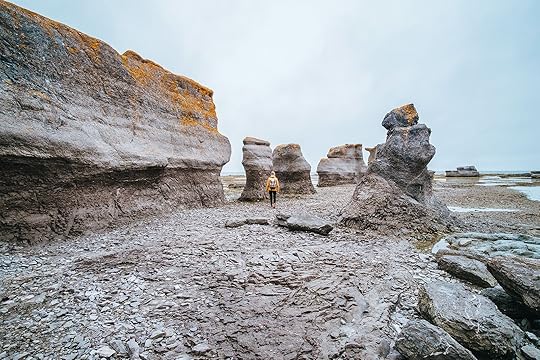 Réserve de parc national de l'Archipel-de-Mingan, Côte-Nord. Photo: Yvon à l'aventure
Réserve de parc national de l'Archipel-de-Mingan, Côte-Nord. Photo: Yvon à l'aventure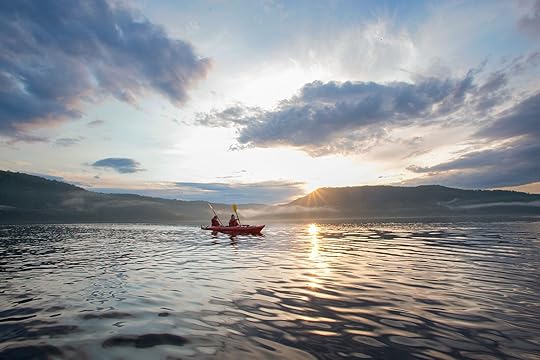 Ferme 5 Étoiles, Côte-Nord. Photo: Christian Savard
Ferme 5 Étoiles, Côte-Nord. Photo: Christian Savard Parc Nature de Pointe-aux-Outardes, Côte-Nord. Photo: É . Marchand
Parc Nature de Pointe-aux-Outardes, Côte-Nord. Photo: É . MarchandHead back down the Saguenay River and rejoin the St. Lawrence coastal route to continue along the maritime road and into the Côte-Nord region. This is a region of raw natural beauty, of sprawling horizons — it’s Québec at its most epic. Begin at Tadoussac, a picturesque village with deep roots and even deeper waters. This is where whales reign supreme: humpbacks, belugas, and even the elusive blue whale. From Tadoussac, you’ll have yet another opportunity to embark on a whale-watching excursion in Saguenay-St. Lawrence Marine Park.
For something closer to the water, Mer et Monde runs sea kayaking excursions that glide quietly into the whales’ realm. Slow down and stay a while — near Tadoussac are welcoming accommodations like Ferme 5 Étoiles, a country-style lodge with many on-site activities.
For additional outdoor adventures in the area, check out Parc Nature de Pointe-aux-Outardes — which could translate as “Point of Bustards” or “Point of Canada Geese” — and give priority to the skies with some of the province’s best bird-watching. Meanwhile, Attitude Nordique in Baie-Comeau is a hub of high-energy recreation ranging from rock climbing to canoeing in a rabaska (a large birchbark vessel originally used by Indigenous peoples).
From Québec City to Côte-Nord, this wildlife-filled journey isn’t simply a route — it’s an invitation. Everywhere it goes offers something special, from historic charm and culinary delights to outdoor adventures and serene natural beauty. So pack your sense of wonder and let the road lead the way — the whales are waiting. 
Explore more road trip inspiration in Québec
Road Trip to the Gaspé Peninsula to Uncover the Best of Seaside Québec
Québec Is a Delicious Slice of Canada. This Road Trip Is Proof.
This Road Trip Across Western Québec Is the Ultimate Voyage Through Nature
April 29, 2025
This Takapuna Beach Hotel Is the Perfect Base for Exploring Auckland’s Quiet Side
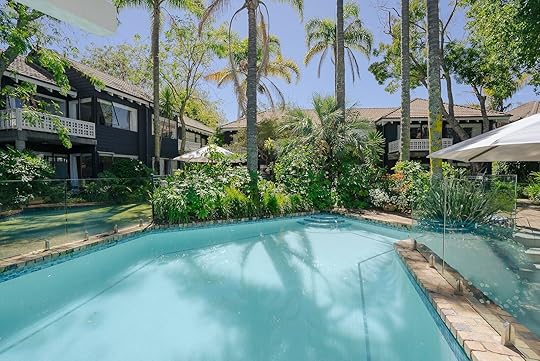
My mantra for traveling to major cities is to “experience the city by staying outside the city.” It may sound counterintuitive, but avoiding dense urban centers in favor of peripheral neighborhoods often proves to be the best way to avoid the mayhem, and peek under the hood at what gives the city its character. That’s why, on my last trip to New Zealand, I decided to forgo hotels in Auckland’s city center and stay in Takapuna Beach.
About a 15-minute drive north from the center of Auckland, Takapuna Beach is a small beach community that feels like a different city entirely. New Zealanders are generally known for their relaxed vibe, even in major cities, but Takapuna Beach is like New Zealand meets coastal California. The beach neighborhood has trendy restaurants and cafes, a thriving arts scene, and a scenic coastal walkway. Staying at the Emerald Inn on Takapuna Beach, I was ideally located to experience it all.
We hope you love the Emerald Inn at Takapuna Beach! Just so you know, Matador may collect a small commission from the links on this page if you decide to book a stay. Listed prices are accurate as of the time of publication.
What it’s like to stay at the Emerald Inn on Takapuna Beach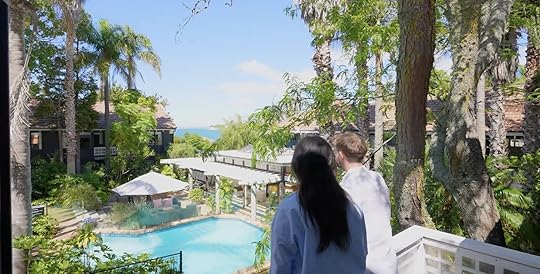
Photo courtesy Emerald Inn
Just a block from the water, the Emerald Inn on Takapuna Beach feels like a beach hotel and a lush garden retreat all in one. Rooms start just over $100 per night. The property’s courtyard is dotted with trees, surrounding the pool and outdoor seating area. If you’re lucky enough to have a second-story room (like I was), you’ll almost feel like you’re in a treehouse while standing on your balcony, with views of the ocean. Strolling through the hotel’s garden instantly puts you in a vacation mindset – a welcome feeling, after a flight to New Zealand that was – well, “long” is an understatement. This is especially true if you’re in the Emerald Penthouse, a luxurious two-bedroom cottage with a full kitchen, tons of natural light, and a beachy aesthetic.
A relaxing beach community on the outskirts of the city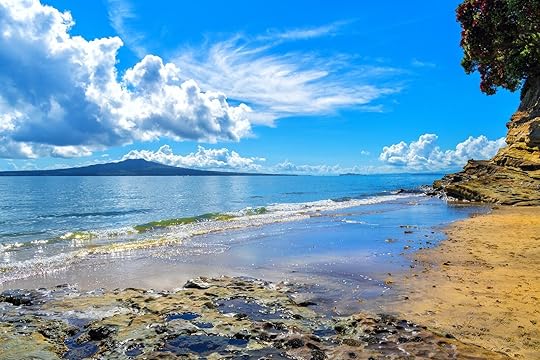
Photo: Stargrass /Shutterstock
You might find yourself on the other side of the world, but Takapuna has a walkable neighborhood feel that makes you feel right at home. Just a few blocks away from the Emerald Inn, there’s a beach conducive to some of Auckland’s most popular water sports, and the rentals to make it all happen. That includes jet skis, paddle boarding, and even windsurfing. You’ll also be treated to views of Rangitoto Island across the water. If you’d rather enjoy the coast at a more leisurely pace, there’s a walking path that begins just around the corner from the Emerald Inn, and winds along the beach to the Milford Reserve. Weaving through neighborhoods, paved wooded trails, and actual beach terrain, it’s the perfect stroll to get acquainted with the area.
Culture-seekers will find more art galleries than you’d probably expect for a community of such unassuming size. Art By the Sea, Art Collective, and Lake House Arts Center are all great places to discover local artists. The Lake House Arts Center – housed in a beautiful old cottage – even offers classes for those bold enough to wade into artistic waters themselves. They also host live music and outdoor markets.
Takapuna is also the perfect base for exploring the islands off the coast of Auckland. From nearby Devonport, you can take a ferry to Rangitoto Island. The island is home to a dormant volcano, and the world’s largest forest of pohutukawa trees (known as the New Zealand Christmas Tree). Adventurous travelers can choose to hike to the summit on their own or on a guided tour, or opt for shorter walking trails.

Photo: patjo /Shutterstock
Eating and drinking in Takapuna BeachSure, you could drive 15 minutes into Auckland’s city center for tons of restaurants, bars, and cafes, but then you’d be missing out on Takapuna Beach’s distinct local vibe. Right around the corner from the Emerald Inn, you’ll find the Takapuna Beach Cafe, a cozy, casual restaurant overlooking the water. It seems like everyone in Takapuna Beach – tourists and locals alike – gathers here for early morning coffee and breakfast. They’re also open for lunch and dinner.
If you’re looking for dinner and drinks in a place that combines a city’s cosmopolitan atmosphere with the chill vibes of a beach community – you’re in luck, because the Takapuna Surf Club just opened a few months ago. No, you can’t catch waves here, but you can catch a delicious pizza and craft cocktails in a rooftop setting with pretty epic views. Much like the Takapuna Beach Cafe, it seems like the whole beach community congregates here for after work drinks, and on weekends for late-night revelry. 
Caribbean islands similar to Europe

The Caribbean is not Little Europe. Over time it’s been shaped by Indigenous groups, colonizers, generations of islanders, and millions of annual visitors. There’s nowhere else on Earth like the Caribbean and nowhere else in the Caribbean like any given island.
But archipelagos with names like the Netherlands Antilles, French West Indies, and Spanish Virgin Islands are bound to invite comparison to the countries they take their names from. And while the Caribbean may not be Little Europe, much of that je ne sais quois that draws visitors to cities like Paris and Amsterdam courses through the Caribbean, too.
If a European escape is just not possible, consider these Caribbean destinations for an alternate taste of France, Spain, Netherlands, or the UK — plus some extra island heat.
We hope you love the Airbnbs we recommend! Just so you know, Matador may collect a small commission from the links on this page if you decide to book a stay. Listed prices are accurate as of the time of publication.
Traveling to the Caribbean? Check out Matador’s Caribbean accommodations guides: The Coolest, Cheapest Airbnbs in the Caribbean The Coolest Airbnbs in Barbados for All Types of Travelers The Most Breathtaking Airbnbs in Jamaica This Caribbean Resort Is Setting a New Standard for Luxury in Turks and Caicos No Passport, No Problem: Caribbean Travel Comes Easy at This USVI Resort This Revamped Puerto Rico Resort Is Steps From San Juan’s Buzziest District Barbados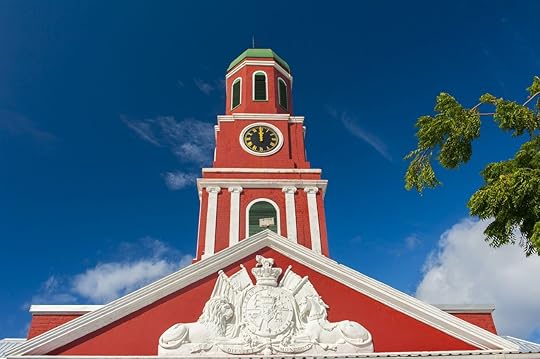
Photo: Filip Fuxa/Shutterstock
Set foot in Bridgetown and you’ll instantly recognize the island’s British influence in its Georgian, Victorian, and Jacobean architecture. Another clue: Barbados’s obsession with horse racing.
Races occur from January to April, May to August, and October to December. Garrison Savannah is the historic horse-racing venue, dating all the way back to 1845, a whole three decades before Kentucky’s famous Churchill Downs was established. Plan your trip around the island’s biggest annual sporting event, the Sandy Lane Gold Cup, which takes places in late February or early March. Just remember: In Barbados spectators sip rum, not gin.
Where to stayAcross the island, accommodations reflect the island’s British roots and Caribbean identity — from former plantation houses to contemporary villas with shaded verandas and wide-open views of the coastline. To experience a side of the island that feels more personal, skip the sprawling resorts and opt for a vacation rental that puts you closer to the island’s culture and everyday life. For a more in-depth look at Airbnbs on the island, check out this guide.
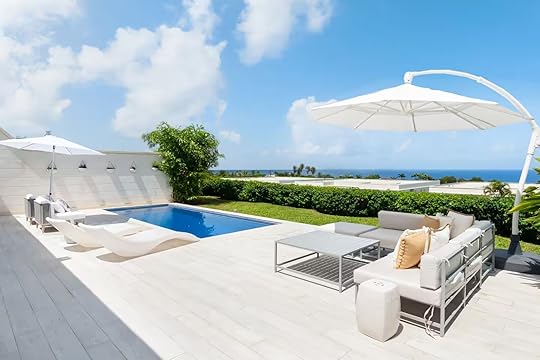 Photo: Airbnb
Photo: Airbnb Photo: Airbnb
Photo: Airbnb Photo: Airbnb
Photo: Airbnb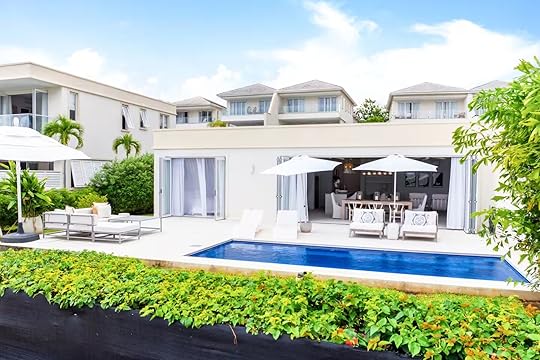 Photo: AirbnbSee more photos
Photo: AirbnbSee more photosSet above the west coast’s coral-sand beaches, this three-bedroom villa in Westmoreland Hills offers a quiet retreat within a secure community of 45 homes. The gated development includes 24-hour security, a clubhouse with a gym, a community pool, and a café. Inside, the villa leans modern and unfussy: three bedrooms, four bathrooms, open-plan living spaces, and a 26-foot pool overlooking the sea. Large windows and patios make the most of the coast-facing views without overcomplicating the design. At $500 per night, it’s a good fit for families or groups who want to stay close to Holetown’s restaurants and beaches, while still having a base that feels rooted in the quieter, residential side of Barbados.
Book NowSteps from the calm waters of Batts Rock Beach, this one-bedroom waterfront apartment ($230 per night) on Barbados’s west coast sits close to Sandy Lane and Holetown. The property opens onto a small bay known for its clear water and occasional sea turtle sightings, with a communal deck shaded by palms for chilled afternoons. Its location makes it an easy base for exploring Bridgetown to the south or the beaches near Bathsheba to the east. It’s best suited for couples or solo travelers who want to stay close to the island’s west coast restaurants, beaches, and snorkeling spots without feeling isolated.
Book NowGrand Cayman
Photo: eric laudonien/Shutterstock
The Cayman islands are a British Overseas Territory. Nowhere is this more evident than the pub scene on Grand Cayman, the largest island. The Kings Head prides itself on being a traditional British Victorian pub, complete with grub and Guinness. It also hosts viewing parties for the Six Nations Rugby tournament every year. Fidel Murphy’s Irish Pub a few minutes south plates up a proper full English breakfast, as well as mains like bangers and mash, cottage pie, and fish and chips. The island even has a Victorian tea room with some seriously tasty scones.
Where to stayAfter a day spent chasing down a full English breakfast or catching the Six Nations at the pub, you’ll find that the best places to stay on Grand Cayman echo the island’s mix of British tradition and waterside living. Beyond the big beachfront resorts, smaller vacation rentals in neighborhoods like South Sound and Cayman Kai offer a more grounded way to experience the island. You’re close to George Town’s historic core and the island’s quieter beaches — but it’s the easy access to coral reefs, boat docks, and open water that gives staying here a distinctly Caymanian feel.
 Photo: Airbnb
Photo: Airbnb Photo: Airbnb
Photo: Airbnb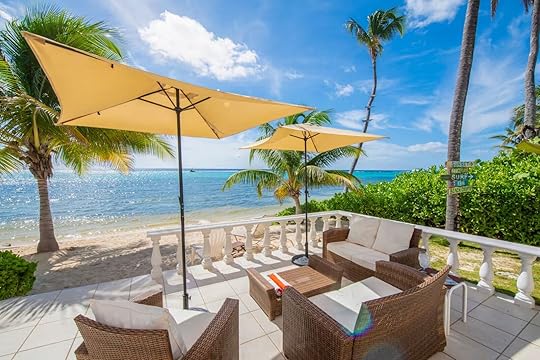 Photo: Airbnb
Photo: Airbnb Photo: AirbnbSee more photos
Photo: AirbnbSee more photosFacing the calm reef waters of South Sound, this three-bedroom, two-story beachfront home ($424 per night) offers a spacious base close to the heart of George Town. The house has direct beach access, a shaded terrace with a rustic bar and charcoal grill, and a wide open-plan interior built for group gatherings, with a 12-seat dining table and a living room perfect for entertaining. Upstairs, two of the bedrooms feature king-size memory foam beds, while a third has two singles, making the house a good choice for families or small groups. The master suite comes with a walk-in wardrobe and a Jacuzzi set beside windows overlooking the Caribbean Sea. South Sound feels residential and local, but you’re less than ten minutes from George Town’s downtown for shopping, cafés, and ferry connections to explore farther afield.
Book NowSet along the shore of Grand Cayman’s bioluminescent bay, this two-bedroom beach house ($495 per night) in Cayman Kai offers a quieter alternative to the island’s more built-up areas. The property features a screened-in porch that faces the bay, a private boat dock, and a white-sand beach just steps from the back door. Inside, both bedrooms have king beds, and additional pull-out sofas make it flexible enough for small families or groups traveling together. On clear nights, the bay behind the house can glow with bioluminescence, offering the rare chance to kayak or swim just steps from shore beneath the stars. This Airbnb is best suited for travelers who want to split their time between kayaking on the bay, snorkeling nearby reefs, and spending evenings under the stars far from resort crowds.
Book NowMartinique
Photo: Damien VERRIER/Shutterstock
If what you really mean when you say you’re dying to visit Paris is that you’d kill for a baguette from a Parisian boulangerie, Martinique may hit the spot. Chez Surena, the island’s oldest bakery, has been serving up baguettes, brioche, and other French breadstuffs in the capital for over 100 years. In Trois-Ilets, La Guérande’s display case tempts with colorful macarons, pyramids of bonbons, and perfectly flaky croissants. Nearby, travelers can see the sugar plantation-turned-museum where Napoléon Bonaparte’s first wife, Joséphine, was born.
Francophiles can also visit the Schoelcher Library, which was built in France in the late 19th century and shipped to Martinique in installments, and Le Cabret, a village on the northwest coast where French painter Paul Gauguin lived for several months. Dive deeper into the post-impressionist’s time on Martinique at the Paul Gauguin Interpretation Center.
Where to stayBetween bakery stops and museum visits, Martinique’s accommodations offer a quieter way to engage with the island’s French heritage. Vacation rentals are scattered along the coasts and hillsides, close to village boulangeries, small markets, and less-developed beaches. Options range from seafront villas in Le Diamant to hilltop homes near Sainte-Marie, offering easy access to rum distilleries, hiking trails, and small towns.
 Photo: Airbnb
Photo: Airbnb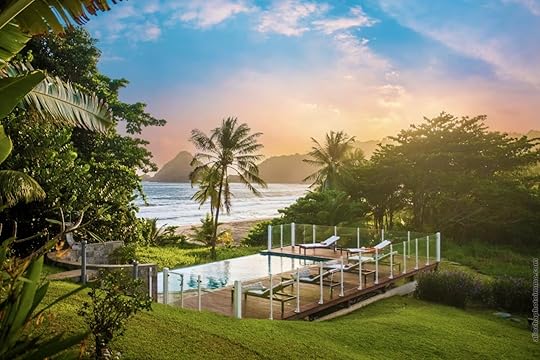 Photo: Airbnb
Photo: Airbnb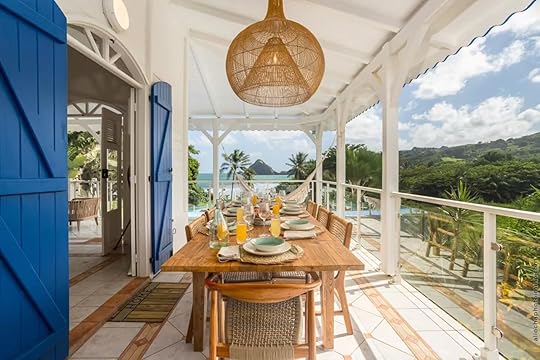 Photo: Airbnb
Photo: Airbnb Photo: Airbnb
Photo: AirbnbSee more photos
A short walk from the Atlantic shoreline and the North Atlantic Trail, this large three-unit estate ($681 per night) works well for families or groups traveling together. The main house has three bedrooms, a modern kitchen, and a sea-facing terrace, while two smaller units — a one-bedroom apartment and a bungalow — offer private spaces ideal for couples or smaller groups within the same party. The property’s pool overlooks the Sugarloaf formation offshore, and a river cuts through the grounds below. While it’s set apart from Martinique’s busier resort zones, it’s within easy reach of local rum distilleries, natural swimming pools, and Sainte-Marie’s seasonal tombolo crossing — one of the island’s rarest coastal phenomena.
Book NowCloser to the southern coast, this newly built one-bedroom villa ($313 per night) sits just a few steps from the sea and faces Diamond Rock, one of Martinique’s most recognizable landmarks. It’s a good fit for couples or solo travelers looking for a quieter base, with a small private pool, a shaded terrace for afternoon rum tastings, and easy access to beaches during certain seasons. The villa has secured parking and a private pool, but the real draw is its location — close enough to Le Diamant’s beaches and cafés for quick trips into town, yet quiet enough for evenings spent watching the sky change over the Caribbean.
Book NowSt. Barts
Photo: Sean Pavone/Shutterstock
St. Barts is like St. Tropez, only instead of old Hollywood starlets it’s today’s celebs chartering the yachts. Like in the French Riviera, beaches and designer boutiques are two of the island’s biggest draws, with shoppers flocking to Gustavia, the capital, for the latest luxury labels. Haute cuisine is also on the menu in Gustavia: Stick around for Bonito’s French-Latin seafood creations and dedicated ceviche menu. Later, when you’re ready to party like the southern French elite, head to Nikki Beach to rub elbows with A-listers.
Where to stayAirbnbs here are generally more expensive than on other Caribbean islands, but the difference isn’t dramatic. If you book in advance, you can still find worthwhile deals — it just takes some looking. Gustavia draws most of the attention, but much of the island’s personality shows up in its neighborhoods. Flamands and Anse des Cayes offer access to beaches without the crowds, while hillside homes across the island give you space to recharge between meals, swims, and trips into town.
 Photo: Airbnb
Photo: Airbnb Photo: Airbnb
Photo: Airbnb Photo: Airbnb
Photo: Airbnb Photo: AirbnbSee more photos
Photo: AirbnbSee more photosSet above the bay in the quiet neighborhood of Anse des Cayes, this two-bedroom villa ($785 per night) combines ocean views with thoughtful design. Recently featured in glossy interior design magazines, the space has whitewashed interiors, organic textures, and a layout that brings in the outdoors. The primary bedroom has a king bed and ensuite bath; the second bedroom, which can be set up as a king or two twins, is smaller — making this best suited for couples or families with older kids. A shaded deck surrounds the pool, and an outdoor shower is tucked just beyond the terrace. Inside, the open-air kitchen includes a Lacanche range and plenty of space for prepping a market haul or cooking up fresh fish from the harbor. The beach is five minutes away on foot, while Gustavia, Flamands, and St. Jean are all a short drive.
Book NowJust a few minutes’ walk from both Flamands and Colombier beaches, this modern two-bedroom duplex ($284 per night) offers a more casual base without sacrificing location. The master bedroom and private garden sit on the ground floor, while upstairs, a second bedroom with an adjacent bath works well for another couple or a pair of friends. The living space opens onto a small terrace with a dining table and plancha grill. With two of the island’s best beaches within walking distance, this rental is well suited to travelers who’d rather stay close to the coast.
Book NowSt. Martin and Sint Maarten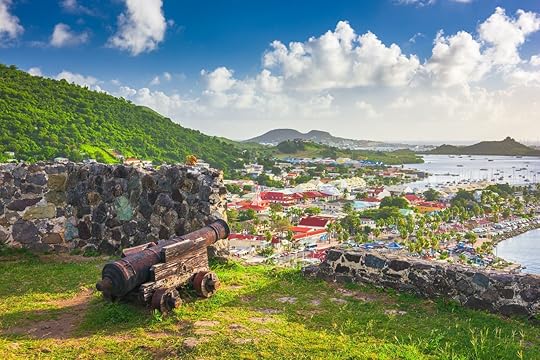
Photo: Sean Pavone/Shutterstock
One perk of Europe travel is the ease of movement between countries. If you want to see France and the Netherlands on one vacation, though, you’re going to lose at least a half-day in travel. St. Martin and Sint Maarten make it easier to double down on European culture in a single trip: They share the same island.
St. Martin, an overseas French collectivity, occupies the northern 60 percent of the island whereas Sint Maarten, a Dutch territory, takes up the rest. Many travelers opt to stay on the Dutch side, a quiet yet popular port with lots of shopping opportunities, but eat on the French half. Bistrot Caraibes, La Villa Restaurant, and L’Auberge Gourmande are big names in fine dining while Le Sous Marin gets rave reviews for its casual, affordable, northern French fare.
For dessert? Some say Cafe Atlantico makes the best croissants. You be the judge.
Where to stayStaying on St. Martin or Sint Maarten puts you within easy reach of two different experiences on one small island. The northern coast near Cul de Sac and Orient Bay tends to be more residential, with quieter beaches and easy proximity to markets, bakeries, and small harbors. On the Dutch side, areas like Simpson Bay and Terre Basses are home to gated communities and villas with sunset views and convenient access to restaurants and nightlife. With the island so compact, it’s easy to stay in one area and spend your days hopping between boulangeries and beach bars on both sides.
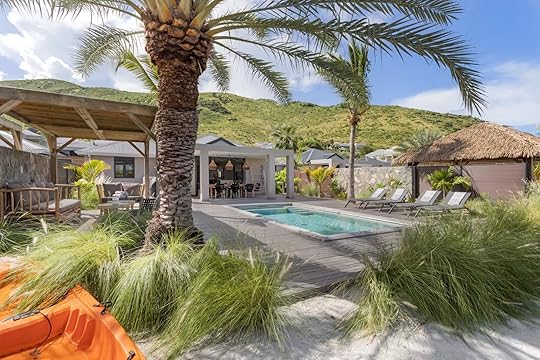 Photo: Airbnb
Photo: Airbnb Photo: Airbnb
Photo: Airbnb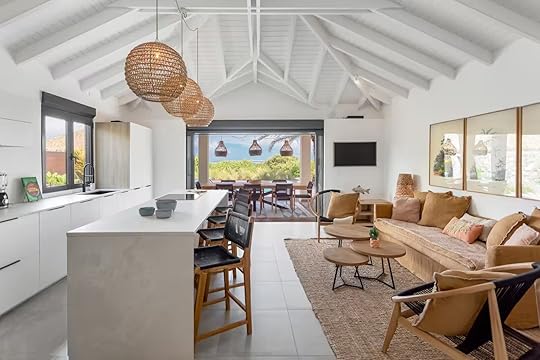 Photo: Airbnb
Photo: Airbnb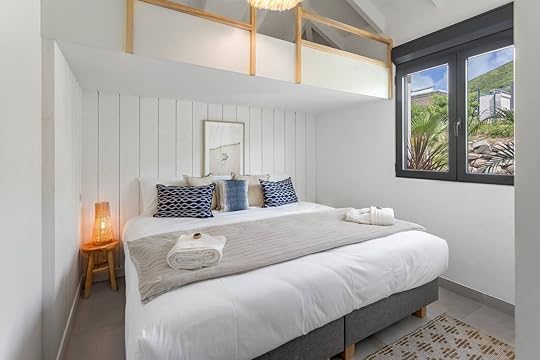 Photo: AirbnbSee more photos
Photo: AirbnbSee more photosOn the northeastern coast of St. Martin, this three-bedroom villa ($518 per night) sits directly on the calm bay of Cul de Sac, with a view of Pinel Island and kayaks available for you to use. The house has two full bathrooms, and one of the guest rooms includes a mezzanine sleeping area, making the setup flexible for families or mixed groups. From the small dock, you can paddle to the island’s restaurants or spend the afternoon snorkeling in the surrounding marine park. The villa is a short drive from local shops, beach bars, and restaurants, with amenities like a bakery and fish market nearby. It’s especially well suited to travelers who want a quieter base with direct access to the water and the option to explore by boat rather than car.
Book NowLocated on the Dutch side in the Terre Basses neighborhood, this two-bedroom villa ($576 per night) offers privacy and contemporary design. Each bedroom has an ensuite and outdoor shower, and the home includes an air-conditioned lounge, a lovely kitchen, and a laundry room. The saltwater infinity pool and partially covered terrace face a quiet stretch of the lagoon, while a small dock over the water makes a good spot for drinks at the end of the day. You’ll have access to a fitness room, a barbecue area, and concierge services for help booking activities or meals around the island. Baie Longue beach is nearby, and Marigot and Maho are both reachable in under 20 minutes by car.
Book NowWillemstad, Curaçao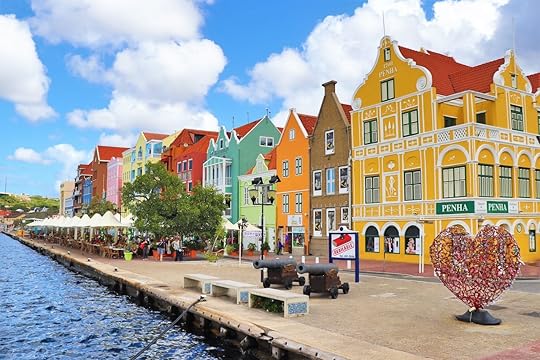
Photo: CathyRL/Shutterstock
Curaçao is part of the Dutch Caribbean. Willemstad’s waterfront is a constant, colorful reminder of this: In the Punda neighborhood, on one side of the Queen Emma Bridge, the capital’s historic Handelskade is lined with nearly neon Dutch colonials. Together with landmarks like the 17th-century Fort Amsterdam and Mikvé Israel-Emanuel Synagogue, which was founded by Sephardic Jewish immigrants from the Netherlands and Iberian Peninsula in the late 1600s, the Handelskade helped earn the city center its UNESCO inscription.
After sightseeing, tap into the island’s bar and cafe culture to channel Amsterdam. Several establishments are modeled after brown cafes, the Dutch equivalent of British pubs. Try Cafe Old Dutch Curacao or Cafe de Tijd for the ambience. Then, when it’s time to soak up all that jenever, or Dutch gin, end the night with a warm, crunchy-gooey order of bitterballen.
Where to stayCuraçao is small enough that you can base yourself in one spot and explore most of the island by car. Staying in or near Willemstad gives you easy access to the city’s cafes, museums, and colonial architecture, while coastal neighborhoods like Jan Thiel and Piscadera offer quick beach access and a more residential feel. Pietermaai, just east of the city center, is a walkable option with restaurants, live music, and renovated townhouses that open onto backyard pools or the sea. Whether you’re here for culture, coastline, or a bit of both, you won’t have to go far.
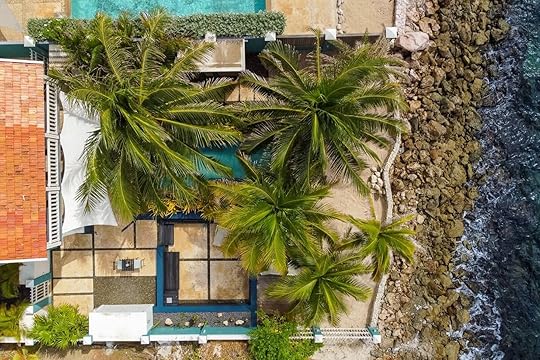 Photo: Airbnb
Photo: Airbnb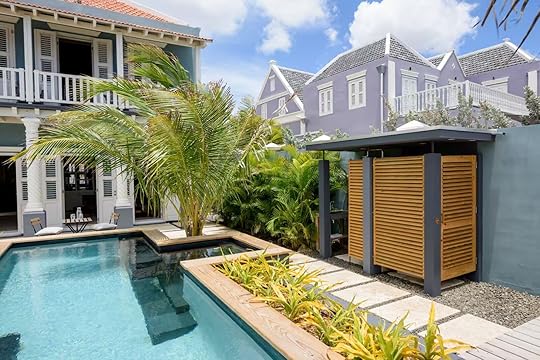 Photo: Airbnb
Photo: Airbnb Photo: Airbnb
Photo: Airbnb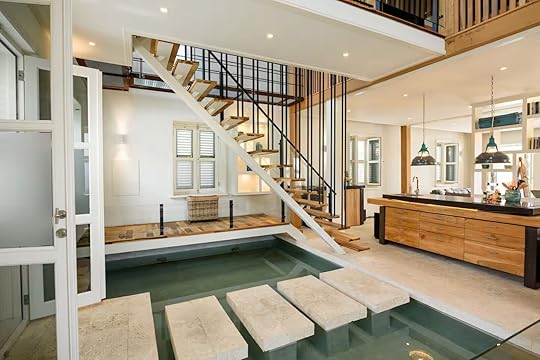 Photo: AirbnbSee more photos
Photo: AirbnbSee more photosSet inside a restored 300-year-old townhouse in the heart of Pietermaai, this one-bedroom villa ($625 per night) is an ideal rental for travelers who want to stay central. The kitchen has modern appliances, but most guests spend their time in the backyard garden, where a private pool overlooks the ocean just beyond the wall. The king bedroom includes an open-style ensuite bath and a custom cooling system designed to keep the bed area comfortable at night. The villa is within walking distance of bars, restaurants, and live music venues, while the gated parking and thick stone walls help keep the atmosphere quiet even in a busy part of town.
This two-bedroom house ($290 per night), also located in Pietermaai, offers direct ocean access and a layout suited to small groups or families. Both bedrooms have ensuites and face a shared living space with kitchen and shuttered windows that let in the trade winds. A porch wraps around the back of the house, where you can lounge by the mineral-based pool or head straight down a few steps to a private beach. An outdoor kitchen and grill area make it easy to stay in for the night, though Willemstad’s nightlife is just blocks away. The house has its own gate with direct access to a small public beach — and the view from the porch at sunset might be one of the best you’ll get without leaving the city. 
Matador Network's Blog
- Matador Network's profile
- 6 followers



